In 1846, after the Americans occupied California; San Jose briefly became the state’s first capital, and the first state legislature convened there in December 1849. The city was incorporated along with San Diego and Benicia on the same day; these three cities were California’s first incorporated cities. State Senator Mariano Guadalupe Vallejo offered the legislature land in Benicia that he had donated to the state for a state capital, as the city did not have any buildings suitable for a state legislature.
By 1850, San Jose had already become a bustling trade depot for the goldfields east of Sacramento, when it became the first chartered city in California. San Jose’s railway connections improved in 1864, and produce from nearby farms could be quickly shipped to San Francisco thanks to the railroad up from San Francisco. As a result, the Santa Clara Valley soon became a fruit-growing and processing region.
The San Jose Electric Light Tower was built in 1881 due to a campaign led by J.J. Owen of the San Jose Mercury to replace the gas streetlights that had illuminated Downtown since 1861. The light did not provide enough illumination, so by 1884, it was only used for ceremonial purposes. During the great gale of 1915, it collapsed. A formal “Court of Historical Inquiry” conducted an informal investigation in 1989, after which it was determined that the Eiffel Tower was not a copyright infringement.
#1 View down The Alameda, 1870.
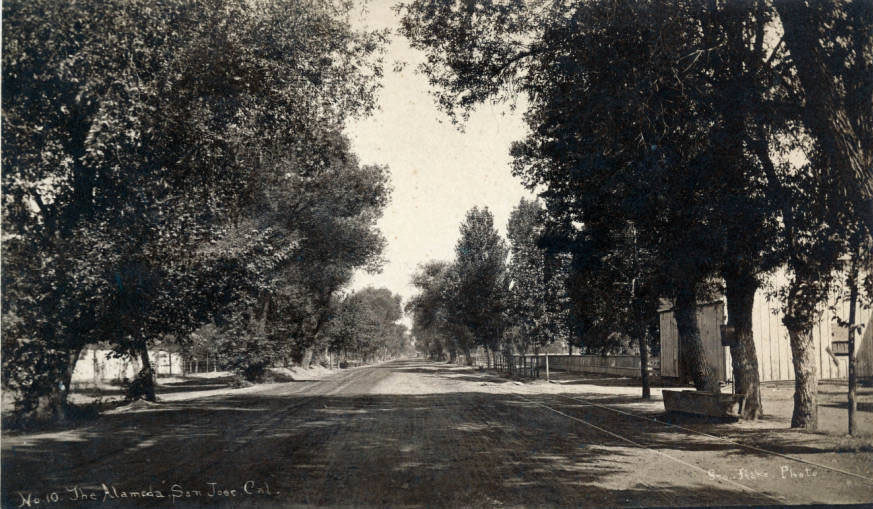
Photograph of a portion of The Alameda in Santa Clara County. The Alameda was the principal road between San Jose and the city of Santa Clara. Willow trees line the center and sides of the road. The track of a horse car line can be seen on the right. In the far distance a horse car is approaching.
#2 Intersection of First Street and El Dorado Street, 1867
#3 Market Street, 1867
#4 San Jose, Bergmann’s Wagon Manufactory, 1867.
#5 College of Notre Dame, 1868.
#6 Commercial and Savings Bank, 1885.
#7 John M. Battee House, 1887.
#8 McGlincy house and barn, 1896.
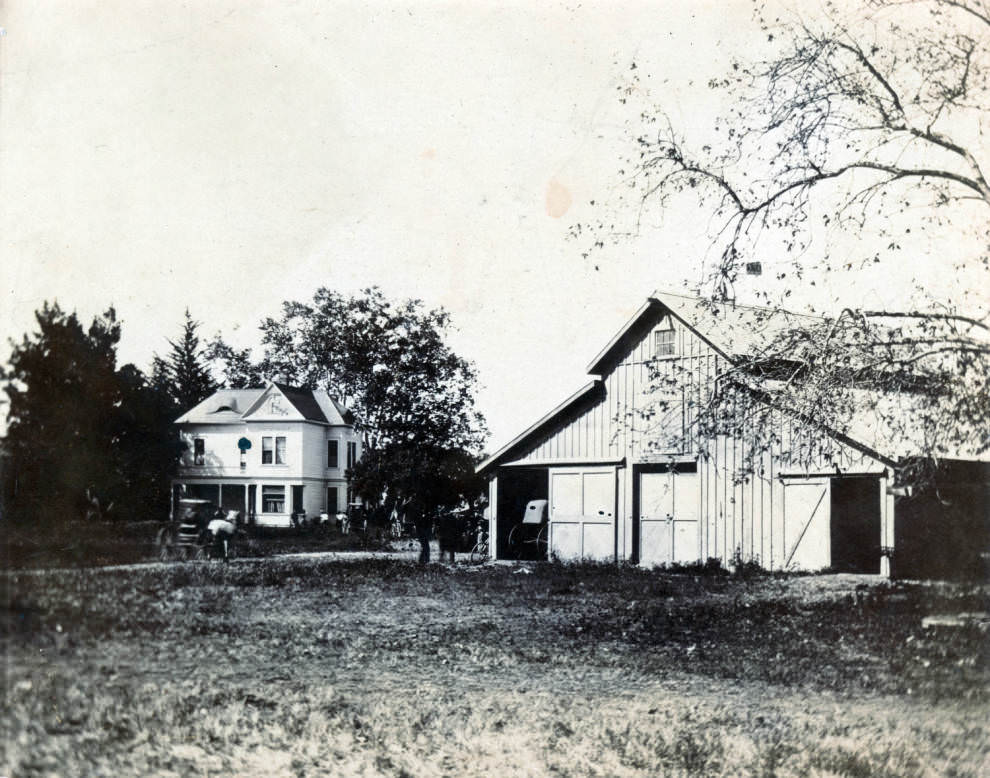
Photograph of the McGlincy house and barn, site of a mass murder on May 26, 1896. James Dunham murdered his wife, stepfather, mother-in-law, brother-in-law, the family maid, and a farm hand. James Dunham fled and was never caught. The house where most of the murders were committed is on the left. A horse and carriage waits outside the house. Another carriage can be seen through one of the open barn doors. The house was demolished in 1955.
#9 The Alameda, 1860s
#10 Victory Theater playbills, 1865.
#11 San Jose, Bank of San Jose, 1866.
#12 Mission San Jose, 1867
#13 King, Meyer & Company Paper Mill, 1870.
#14 Lick Mill office, 1871.
#15 Vendome Hotel lawn, 1871.
#16 Highland School, 1876.
#17 Knox Building, 1876.
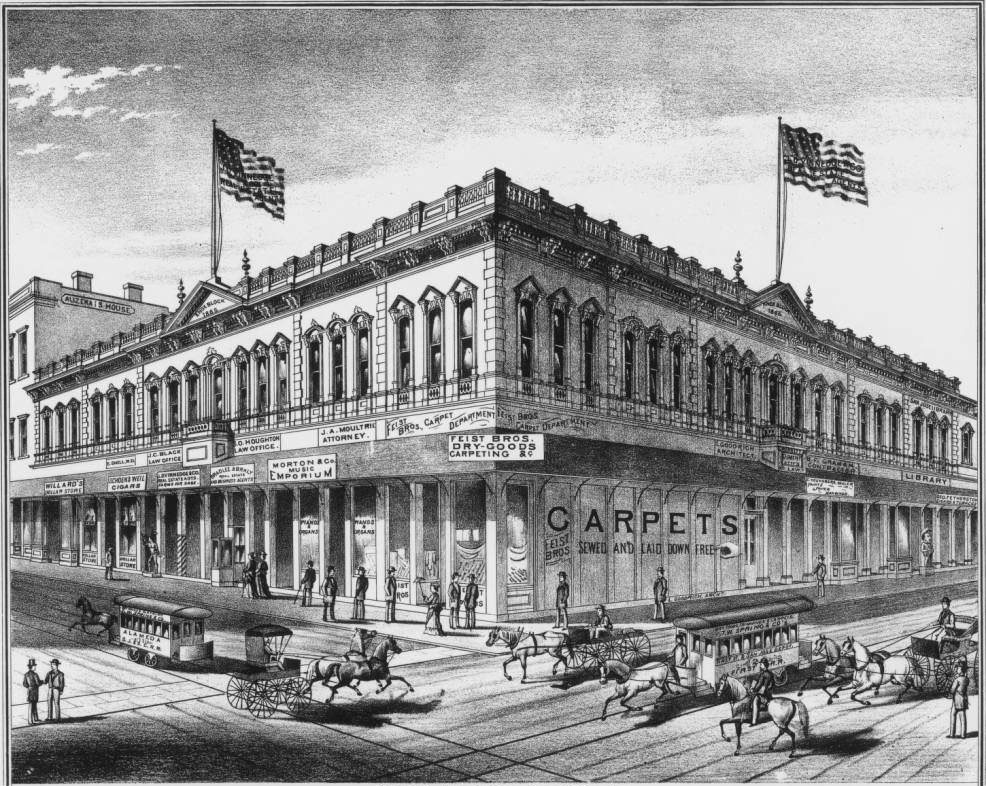
Engraving of the Knox Building, also called the Knox Block. The Knox Building stood at the northwest corner of First Street and Santa Clara Street. It was constructed in 1866, and demolished in 1945. Businesses housed in the Knox Building included: a real estate office, a musical instruments shop, the Feist Brothers' dry goods store and two cigar shops. A doctor, a contractor, lawyers and architect Levi Goodrich had offices on the second floor. Note the San Jose Library on the second floor at far right. Horse drawn trolleys pass through a busy intersection. This engraving is from Thompson & West's 1876 Historical Atlas of Santa Clara County.
#18 Commercial and Savings Bank, 1878.
#19 Santa Clara County court house, 1880.
#20 Santa Clara Street, San Jose, 1880.
#21 Santa Clara Street, San Jose, 1880.
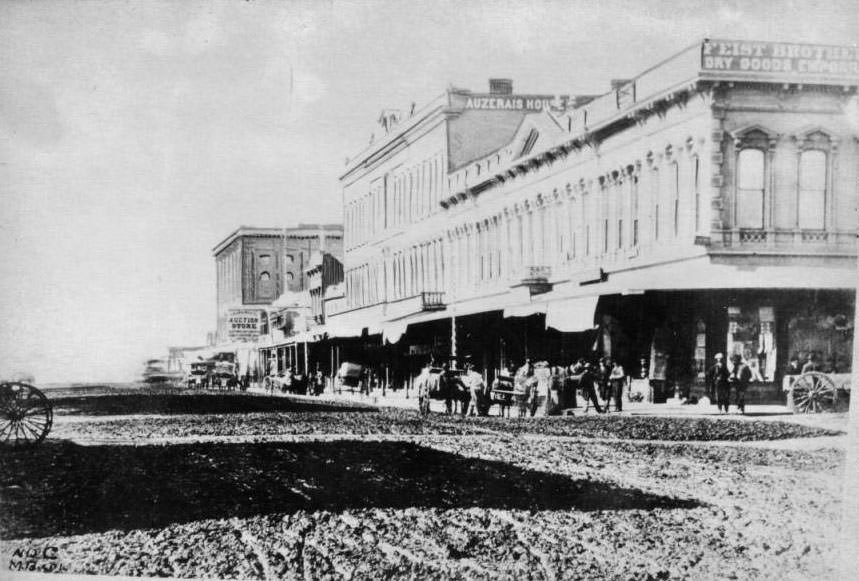
View of Santa Clara Street looking westward across the intersection with First Street. Building in the foreground has sign, at roofline, "Feist Brothers Dry Goods Emporium." The three-story building next to it has sign, at roofline, "Auzerais House." In the background, a sign reads, "Auction Store."
#22 South First Street, San Jose, 1880.
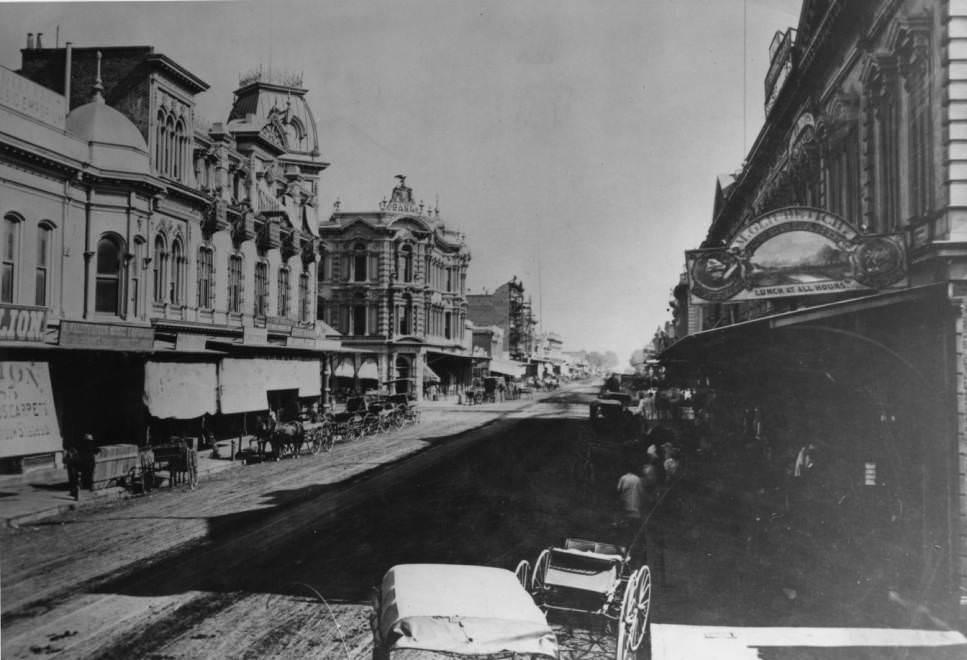
Looking south along First Street towards intersection with Santa Clara Street. On the near left, the two story building is the Music Hall, built in 1870; next, is the Bank of San Jose, built in 1871. Across Santa Clara Street is the Commercial and Savings Bank. In foreground, on the right, is M. Gliubetich's Overland Chop House and Coffee Saloon.
#23 Fort Marcy Headquarters in Santa Fe, New Mexico, 1881.
#24 Santa Fe, New Mexico, 1881.
#25 Lick Mill driveway, 1882
#26 San Francisco, Bancroft Library, 1882.
#27 San Jose, Alum Rock House, 1885.
#28 San Francisco, Market Street, Bancroft’s History Company building, 1886.
#29 Camp Terrell National Guard encampment, 1888.
#30 Lick Observatory telescope eye piece, 1888.
#31 Santa Clara, Agnews Asylum under construction, 1888.
#32 Santa Clara, Agnews State Asylum for the Insane, 1888.
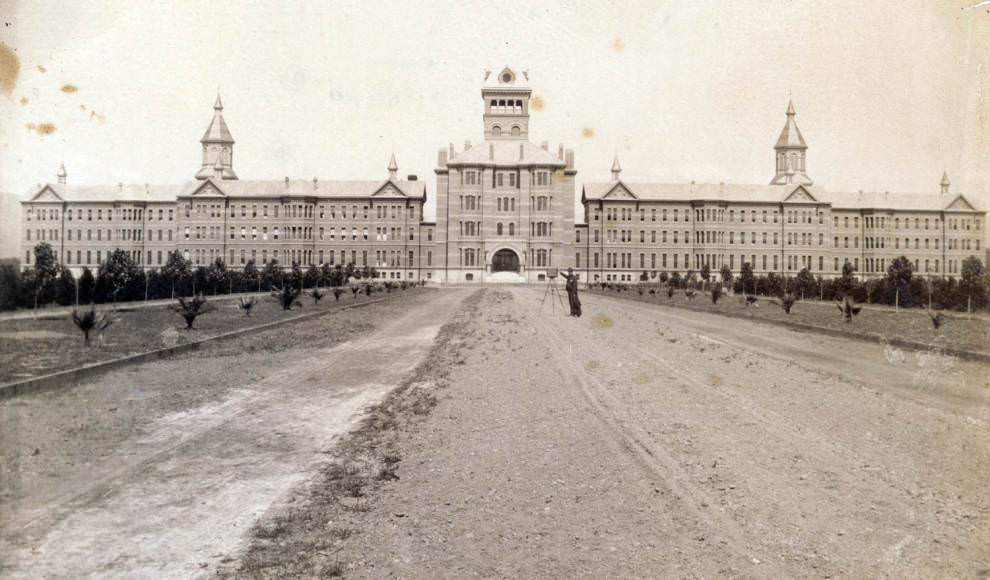
Photograph of the Agnews State Asylum for the Insane shortly after its construction in 1888. A photographer and camera stand in the dirt road leading to the main entrance of the asylum. The asylum consisted of an administration building in the center flanked on either side by wings housing more than 900 patients. The building was 750 feet long and was constructed at a cost of $750,000. Much of the stone and masonry building collapsed during the 1906 earthquake, killing 11 staff members and 101 patients.
#33 Cookhouse wagon, 1890.
#34 Fair Mansion, 1890.
#35 Guadalupe River flood near Notre Dame College, 1890.
#36 Lick Observatory 36-inch telescope, 1890.
#37 Mount Hamilton stage at Lick Observatory, 1890.
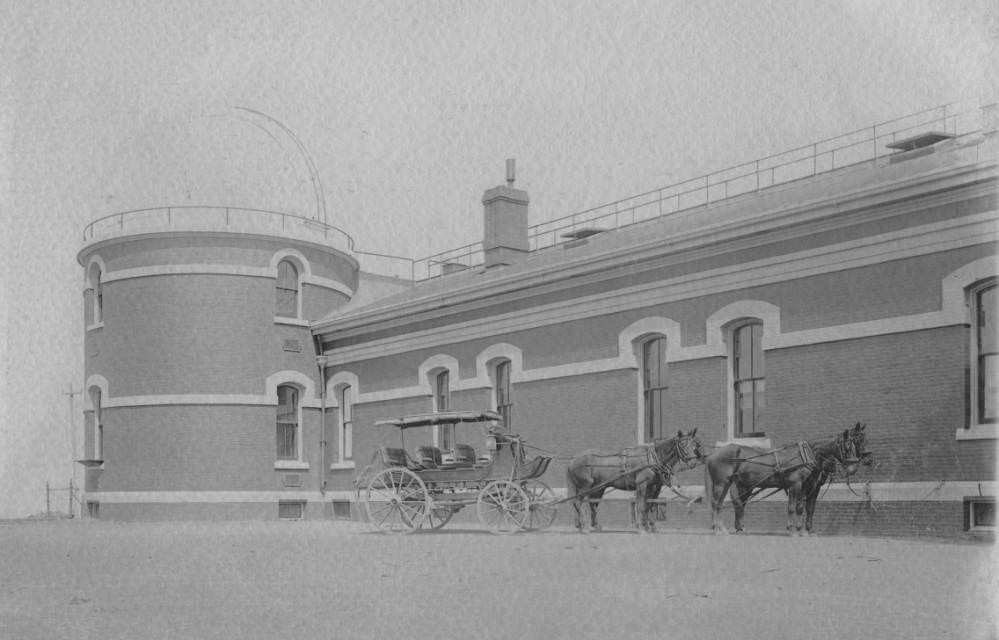
One of the Mount Hamilton Stage Company's carriages is parked at the Lick Observatory. The stage transported thousands of tourists to the Lick Observatory every year. The twenty-eight mile winding road was a three and a half to four hours ride each way. The dome on the left houses a 12-inch refracting telescope.
#38 San Jose Mercury newspaper office, 1890.
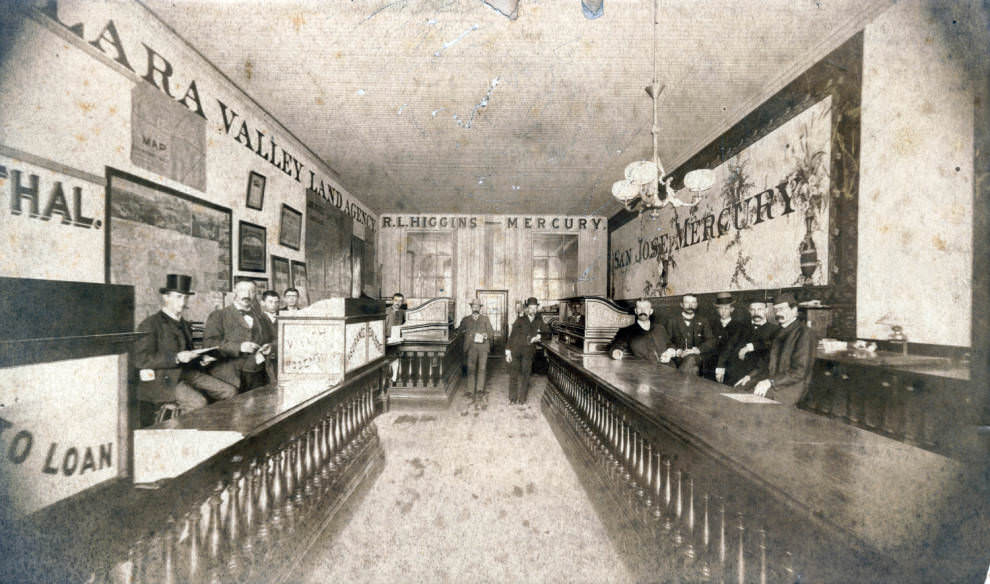
Photograph of an office shared by the San Jose Mercury and the Santa Clara Valley Land Agency. The space used by the San Jose Mercury is on the right and the space used by the Santa Clara Valley Land Agency is on the left. Both spaces are fronted by long counters with men sitting/standing behind them. More men are standing at the rear of the photograph. This office was located at 171 West Santa Clara Street in San Jose. Office space was shared by these two companies for only a few years.
#39 Second Street Parade, San Jose, 1890.
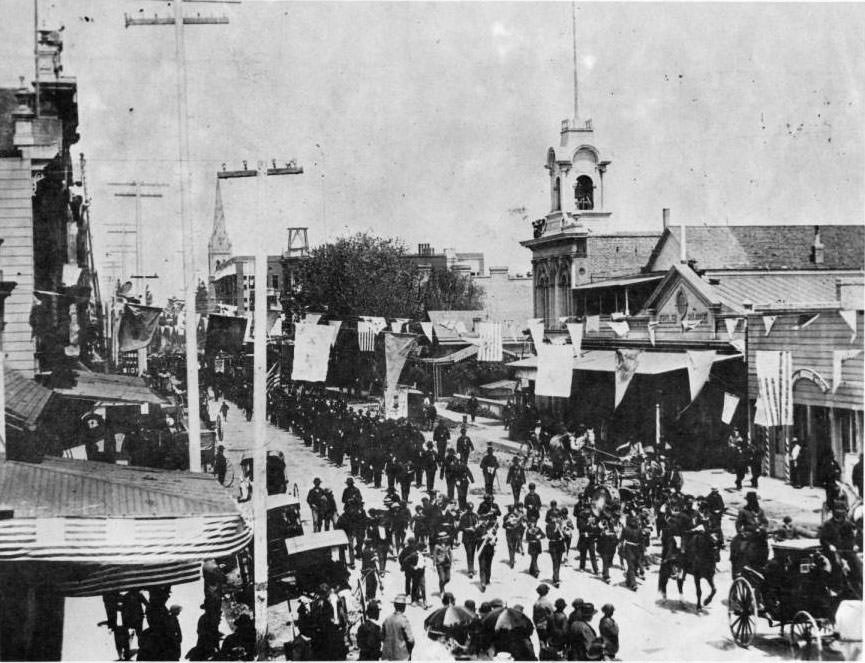
A marching band and a column of men form part of a parade on Second Street near San Fernando Street. The Empire Fire House at 76 Second Street can be seen. Some people stand on the building's roof near the bell tower to get a better view. Flags, banners and bunting are on buildings and strung across Second Street.
#40 Twelve Mile House, 1890.
#41 Smith Creek Hotel, 1890.
#42 Haypress on Santa Clara County ranch, 1891
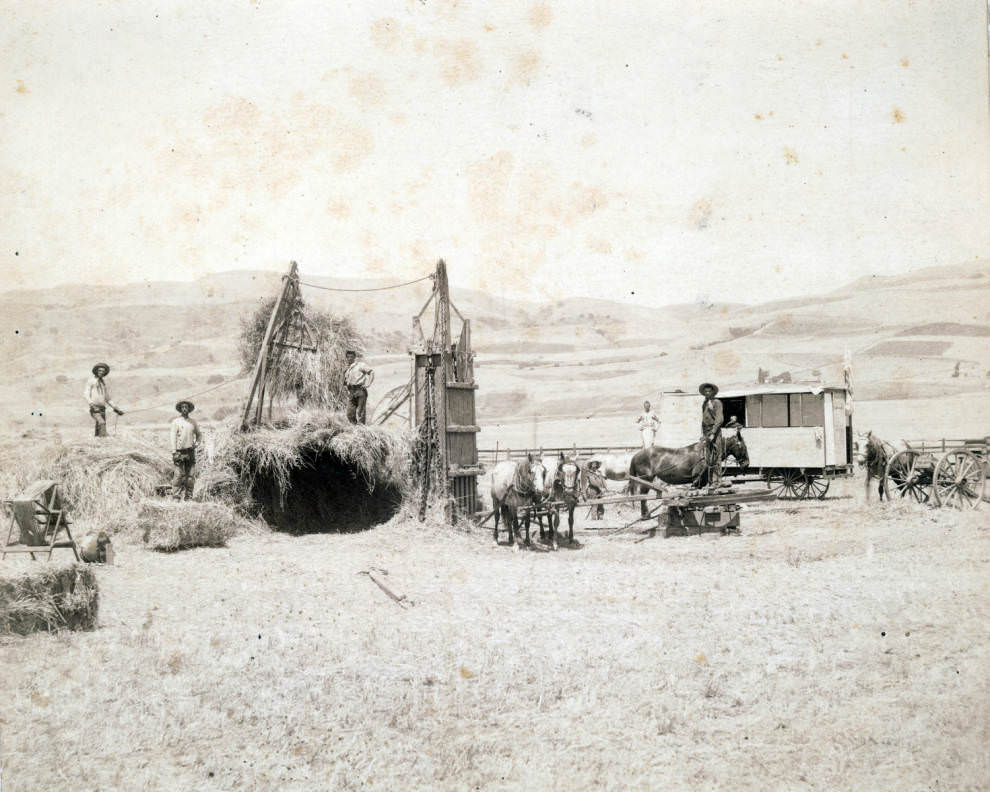
Photograph of a haypress and crew baling hay somewhere in Santa Clara County. The haypress is the tall wooden structure in the center. The horses to the right power the haypress to compress the hay into bales. In the background on the right is the cook wagon with the cook, in apron, standing next to it. A child can be seen in the cook house's window.
#43 Fire damage in San Jose, 1892
#44 Fire damage in San Jose, 1892.
#45 Northwest corner of San Martin Ranch, 1892.
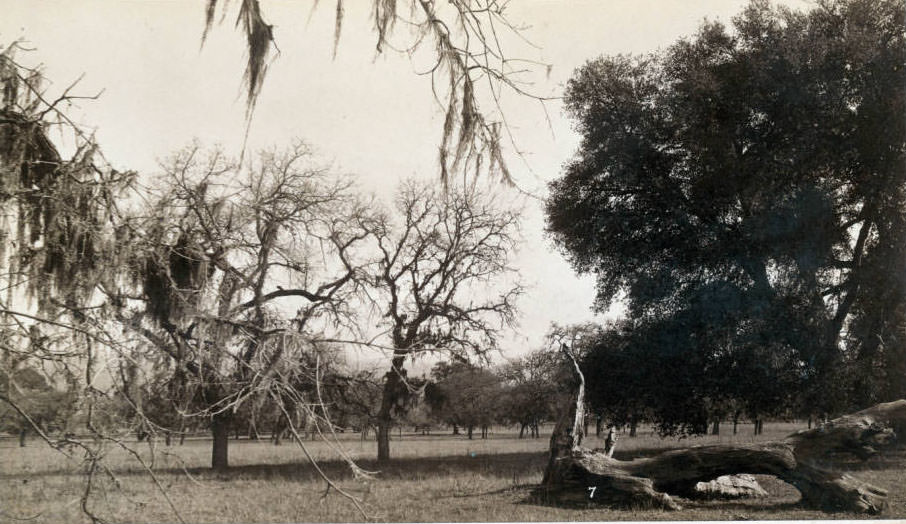
Photograph of a part of the San Martin Ranch, taken from the northwest looking toward the southeast. To the left several dead trees are covered by Spanish Moss. To the right is a line of oaks. The San Martin ranch was a 9000 acre ranch owned by Hiram Morgan Hill. On the other side of the photograph is an advertisement by developer C. H. Phillips offering lots in San Martin Ranch for sale.
#46 Oak trees on San Martin Ranch, 1892.
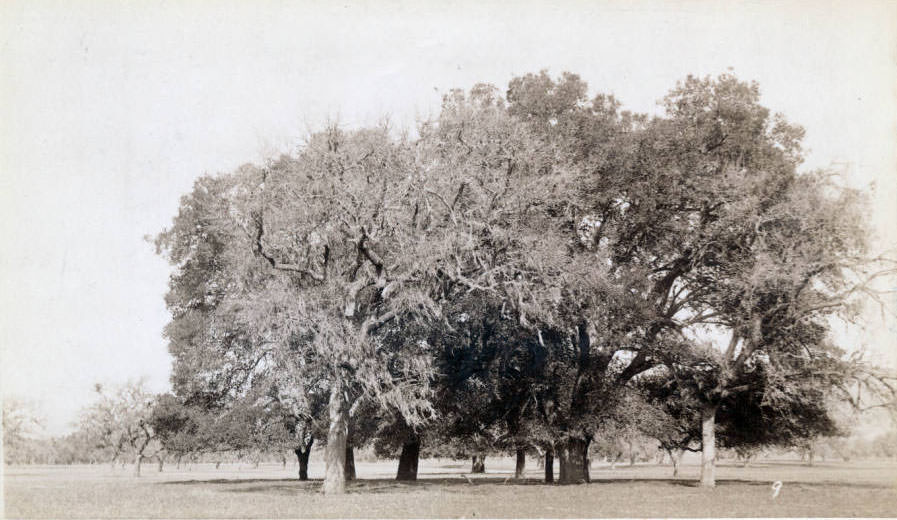
Photograph of a stand of coast live oak on San Martin Ranch. The San Martin ranch was a 9000 acre ranch owned by Hiram Morgan Hill located between Morgan Hill and Gilroy in southern Santa Clara County. On the other side of the photograph is an advertisement by developer C. H. Phillips offering lots in San Martin Ranch for sale.
#47 San Jose Post Office cornerstone ceremony, 1892.
#48 Kensington Post Office, 1893.
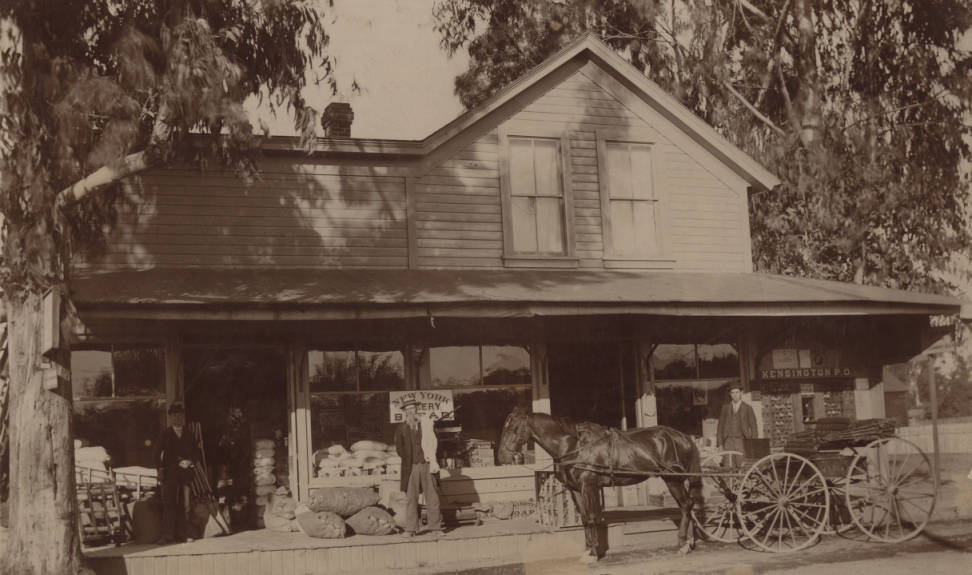
Black-and-white photograph of the Kensington Post Office, Willow Glen. Between Jan. 14, 1893 and Jan. 14, 1895, all mail addressed to residents of Kensington, California, went to the Kensington Post Office, housed in this grocery store on the northeast corner of Minnesota and Cherry avenues in what is now San Jose. This post office bore the name Kensington until it became Willowglen in 1895. It continued as Willowglen until the transferring of its mail service to San Jose on Jan. 15, 1900. It continued to house a store until razed to make way for Station 6 of the San Jose Fire Department, built in 1963. The bearded man in the photo is probably Postmaster Albert E. Winlow who, with D. W. Smythe, operated the grocery store under the name of A. E. Winlow & Co." Grocery items can be seen stacked on the porch and in the windows.
#49 First Unitarian Church, 1895.
#50 Fredricksburg Brewery, 1895.
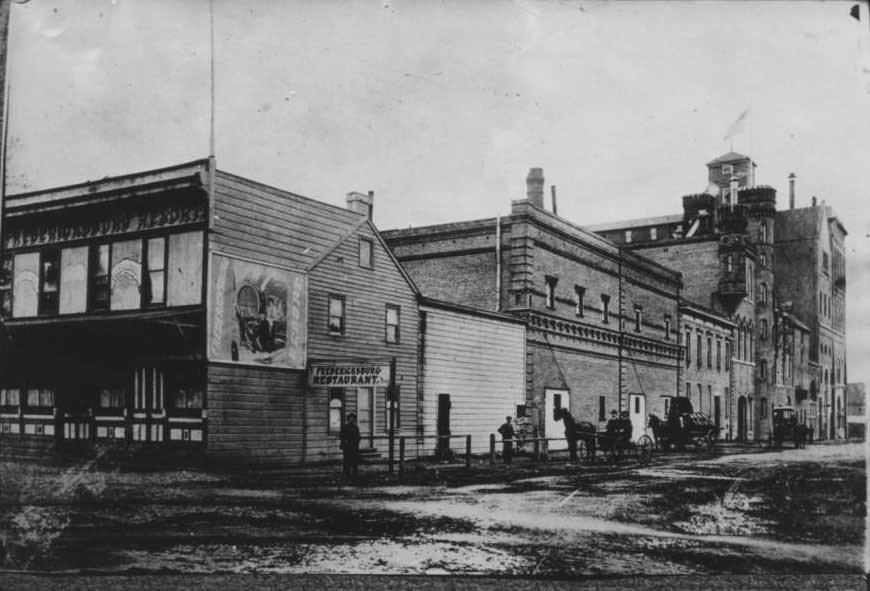
The Fredricksburg Brewery was built on the corner of Cinnabar Street and The Alameda in 1869. A sign on the side of the building reads "FREDRICKSBURG RESTAURANT." Banners on the front and side of the building say "FREDRICKSBURG RESORT." Image also shows horse-drawn carriages with people.
#51 Hester School eighth grade class, 1897.
#52 Smith Creek Hotel, 1895.
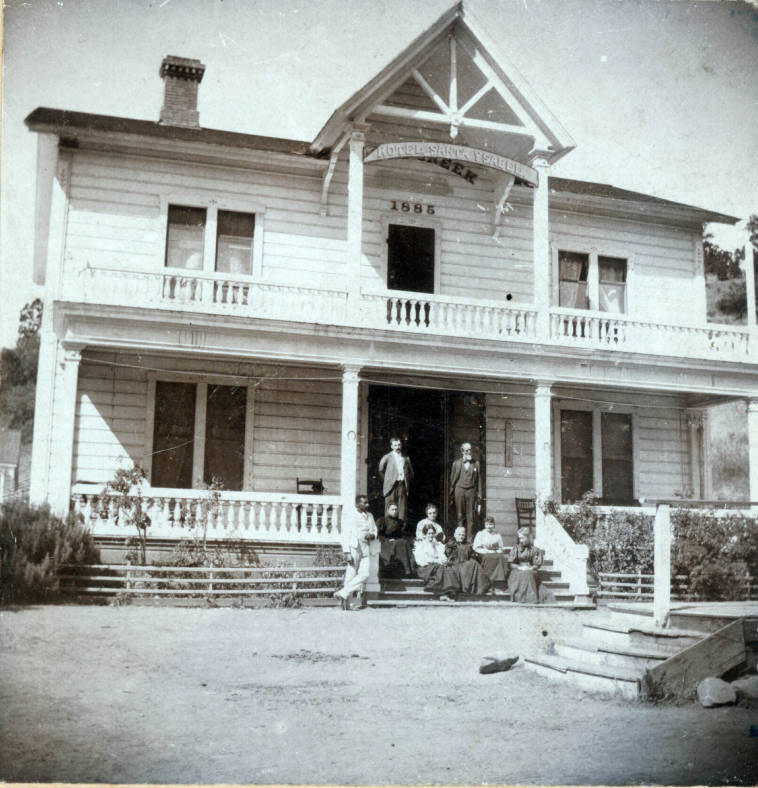
Photograph of the front of the Smith Creek Hotel. It was also known as the Santa Ysabel Hotel. The hotel was located on the banks of Smith Creek on Mount Hamilton Road. This road led from San Jose to Lick Observatory. A group of ladies sits on the front steps of the hotel. Two gentleman stand on the veranda behind them. The standing man on the right may be Thomas Snell, owner and builder of the hotel. Another gentleman stands to the left of the ladies. This may be a photograph of the hotel staff taken shortly after the hotel opened in 1895.
#53 Santa Clara County Greenhouse interior, 1897.
#54 Stanford University cactus garden, 1897.
#55 Stanford University quadrangle, 1897.
#56 Stanford University quadrangle, 1897.
#57 Stanford University quadrangle, 1897.
#58 Tall tree at Palo Alto, 1897.
#59 Water fountain in ornamental pool, 1897.
#60 Woman in garden, 1897.
#61 Woman with tandem bicycle, 1897.
#62 East San Jose School classroom, 1898
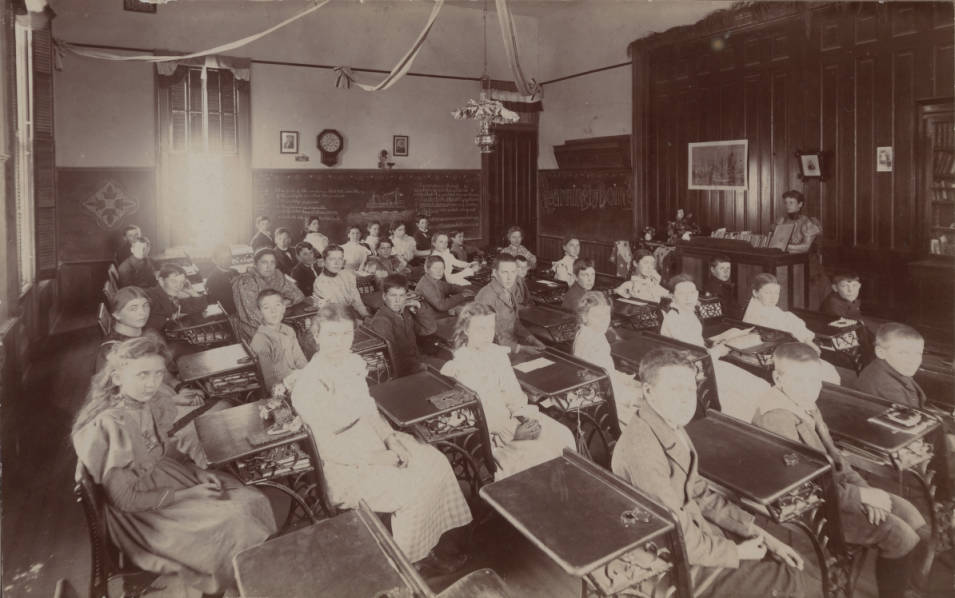
An East San Jose School classroom in 1898. The boys and girls have turned to face the camera, while sitting at their desks. The room is decorated with bunting at the teacher's desk, above the windows and the door. Streamers are seen; most likely, these are attached to a light fixture that cannot be seen in the picture. "Learning by Doing," is written on a blackboard at the front of the classroom. East San Jose School was located on Adams between Alum Rock Avenue and Jefferson.
#63 California Jubilee Parade, 1899.
#64 California Jubilee Parade, 1899.
#65 California Jubilee Parade, 1899.
#66 California Jubilee Parade, 1899.
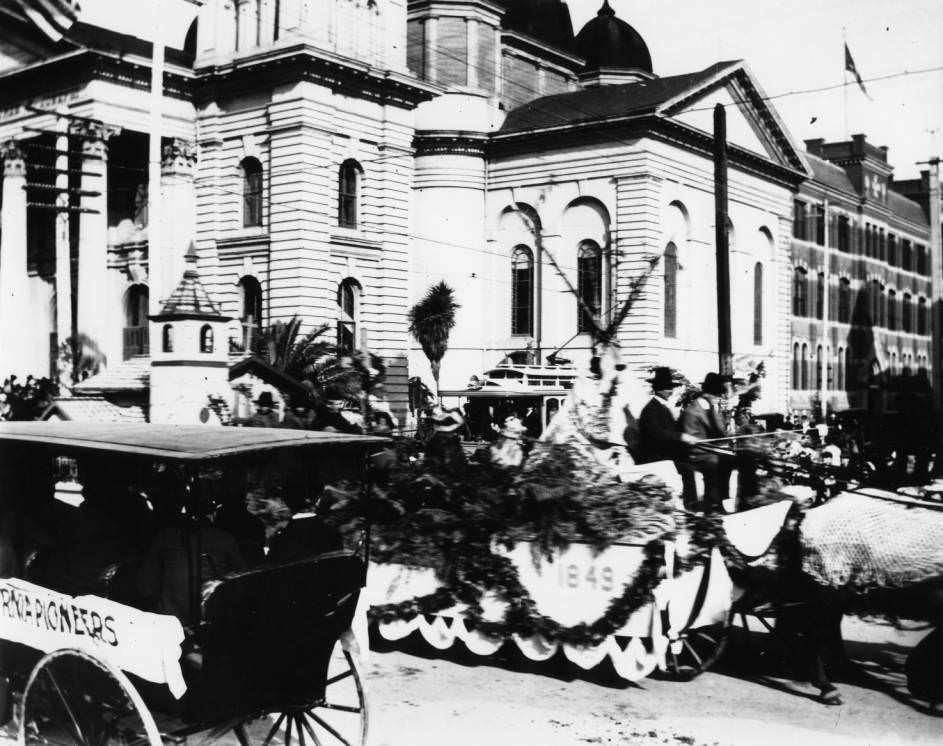
Carriage with banner, "California Pioneers," heading north on Market Street passes the southbound "Old Mission" float. A trolley can be seen behind the float, waiting for the float and carriage to pass. Saint Joseph's Roman Catholic Church can be seen in background. The California State Legislature had met for the first time in San Jose fifty years before.
#67 Train derailment outside of Santa Clara, 1899
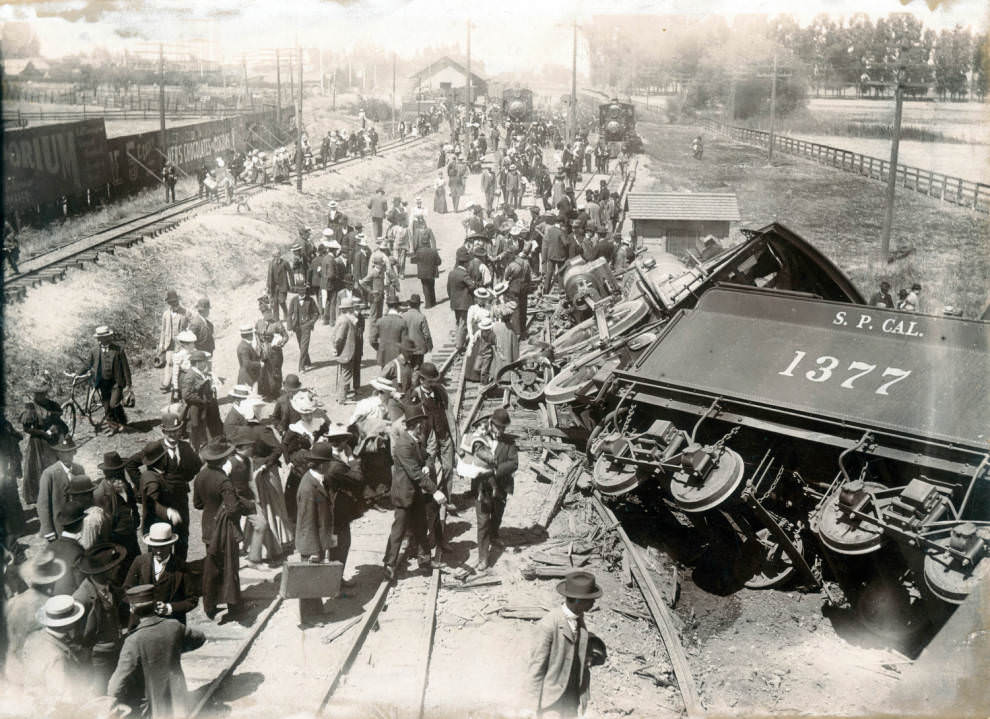
Photograph of a railroad derailment that took place in Santa Clara on August 28, 1899. Two engines derailed here, although one is under No. 1377 and cannot be seen. These two trains in tandem were pulling a heavy load of passengers returning from Monterey. They derailed at this intersection of broad and narrow gauge railroad tracks when a switchman switched the track to narrow gauge without realizing a broad gauge train was fast approaching. There were a few minor injuries but no one was seriously hurt. A large crowd is milling around examining the wreck. Note that many of the men have their train tickets tucked into their hatbands. In the background is the Santa Clara Depot as well as two trains unable to proceed.
#68 Fourth Ward School, 1892.
#69 Replica of California’s first State House, 1890s.
#70 Richards’ family parlor, 1890s.
#71 Saddle Room at Agricultural Park, 1890s.
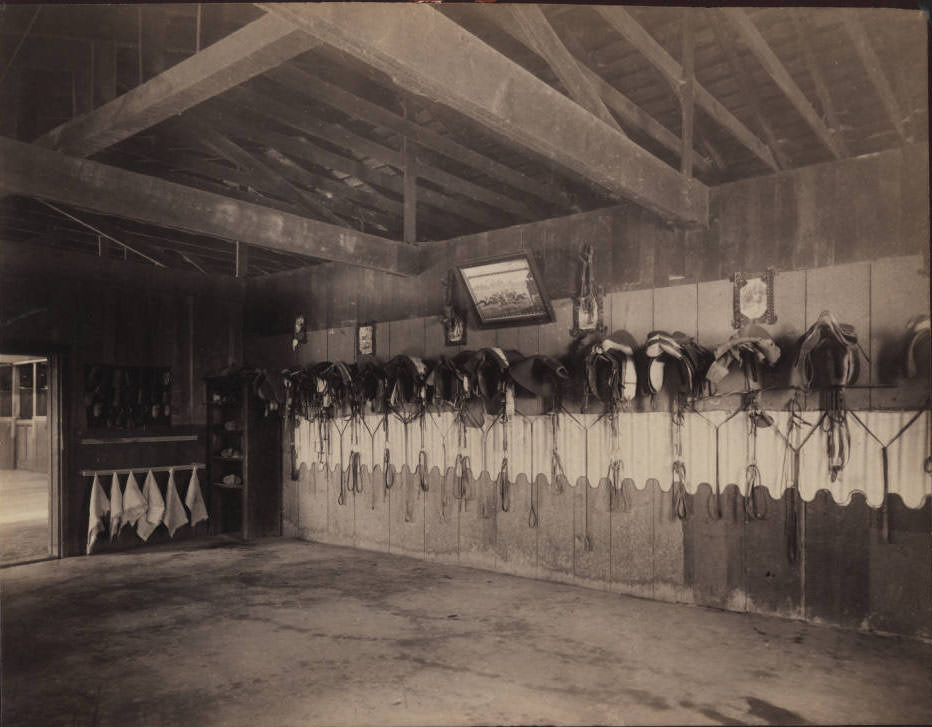
The Saddle Room at Agricultural Park. Agricultural Park was the site of the County Fair for many years. These appear to be racing saddles. Agricultural Park was located to the west of Race Street and south of The Alameda. It eventually became the Hanchett Park residential area.
#72 Sailboat “Wanderer” at Alviso, 1890s.
#73 Saint James Hotel, 1890s.
#74 Saint James Hotel, 1890s.
#75 San Joaquin County Courthouse, 1890s.
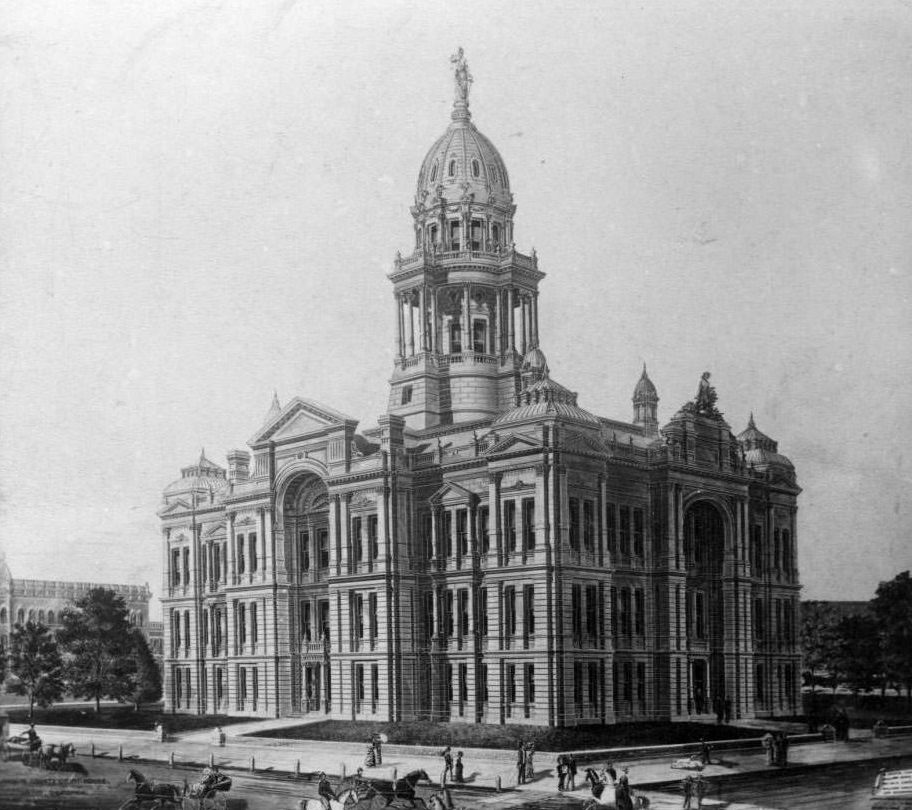
A drawing of the San Joaquin County Courthouse mounted on a cardboard mat. This is advertising for the office of L. M. Cutting & Son, real estate, stock and money brokers, based in Stockton, California. The item is dated 1888 and was produced by Batchelder, also of Stockton, California.


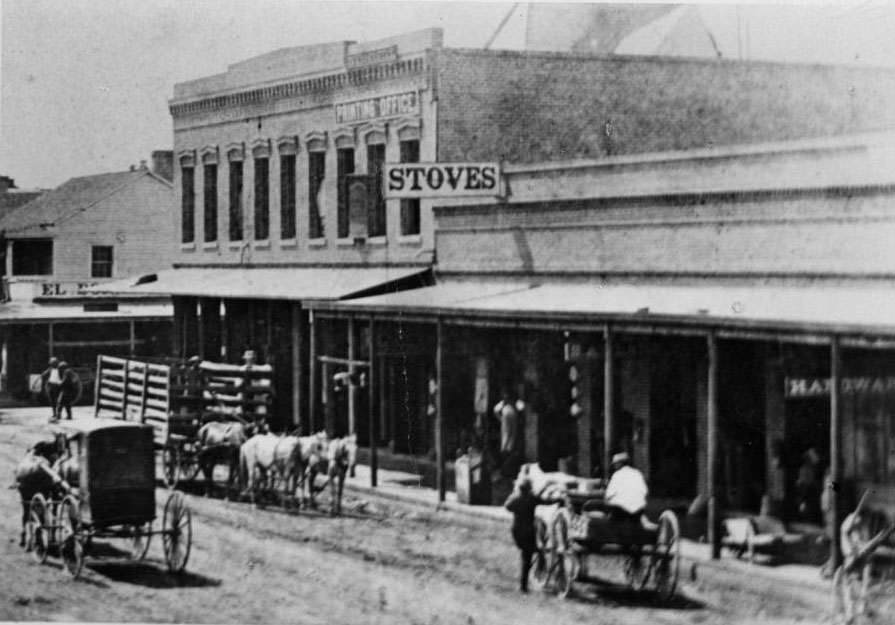
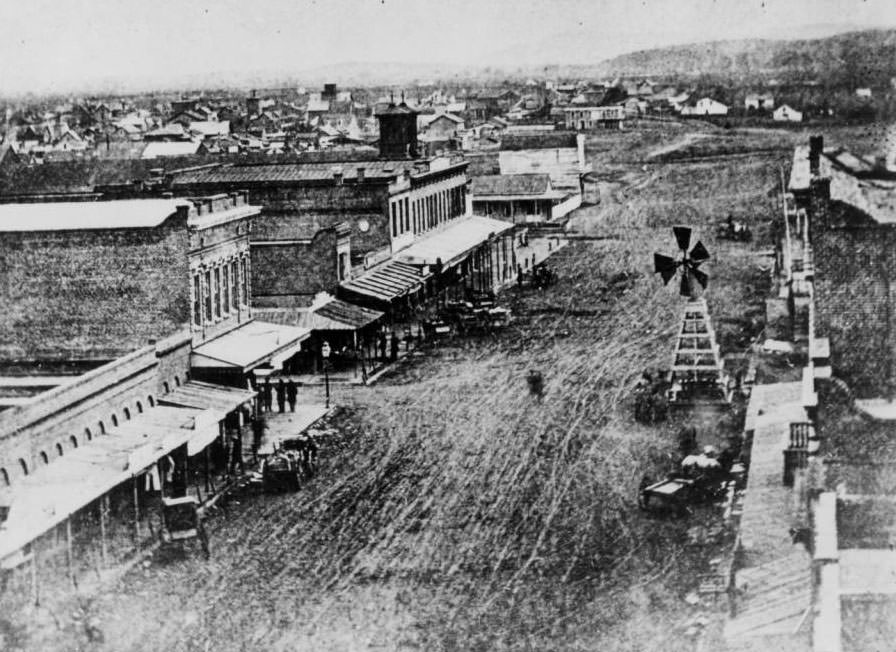
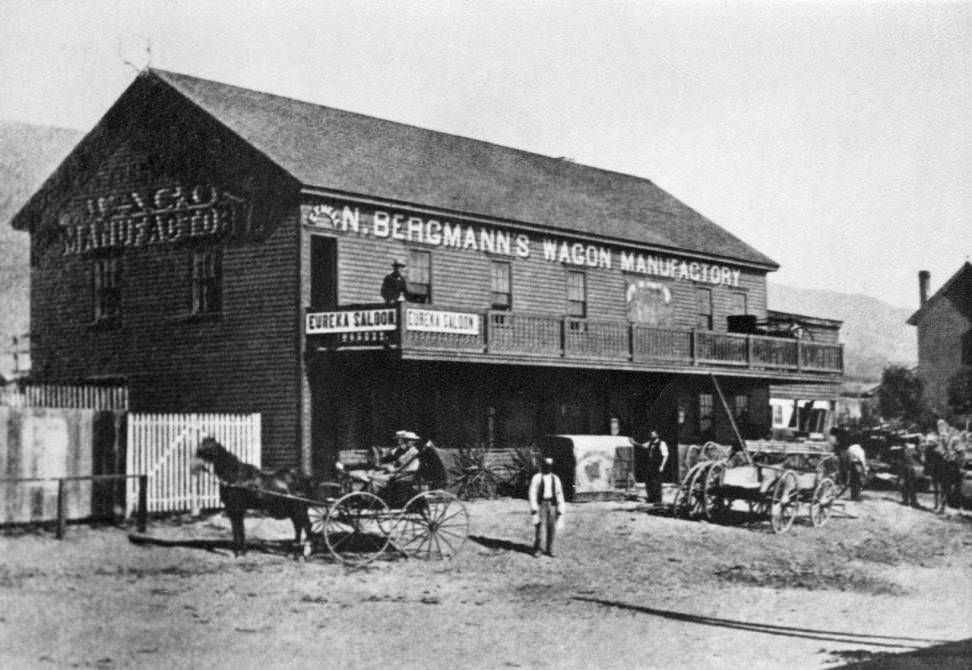
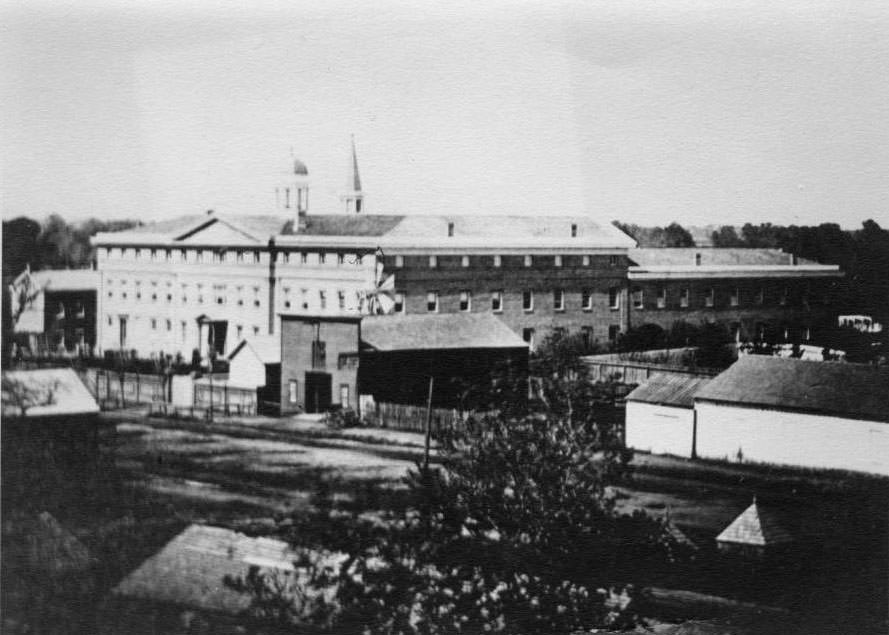
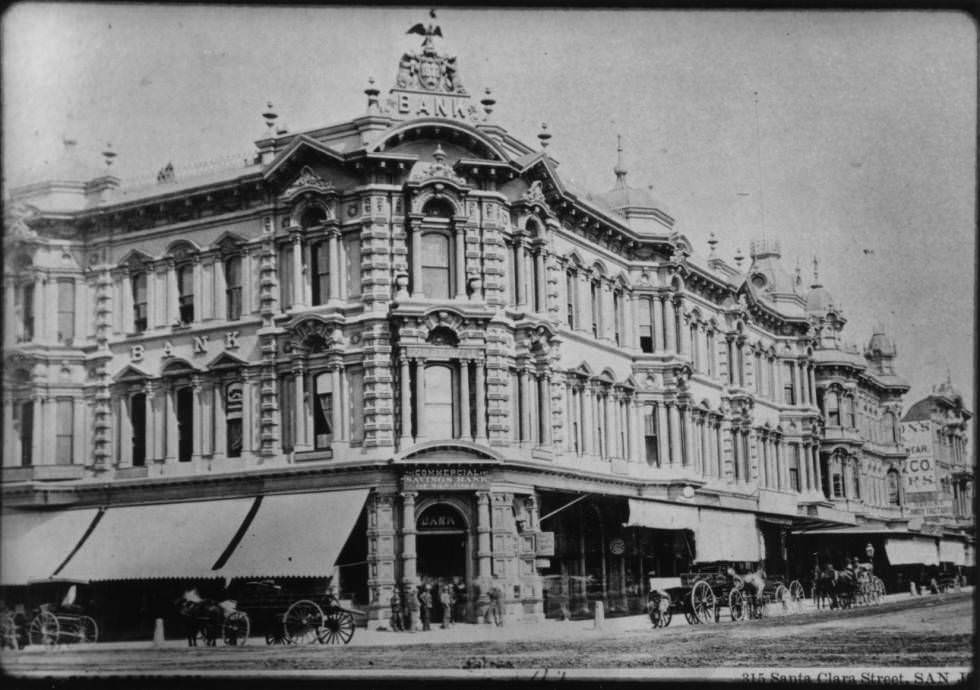
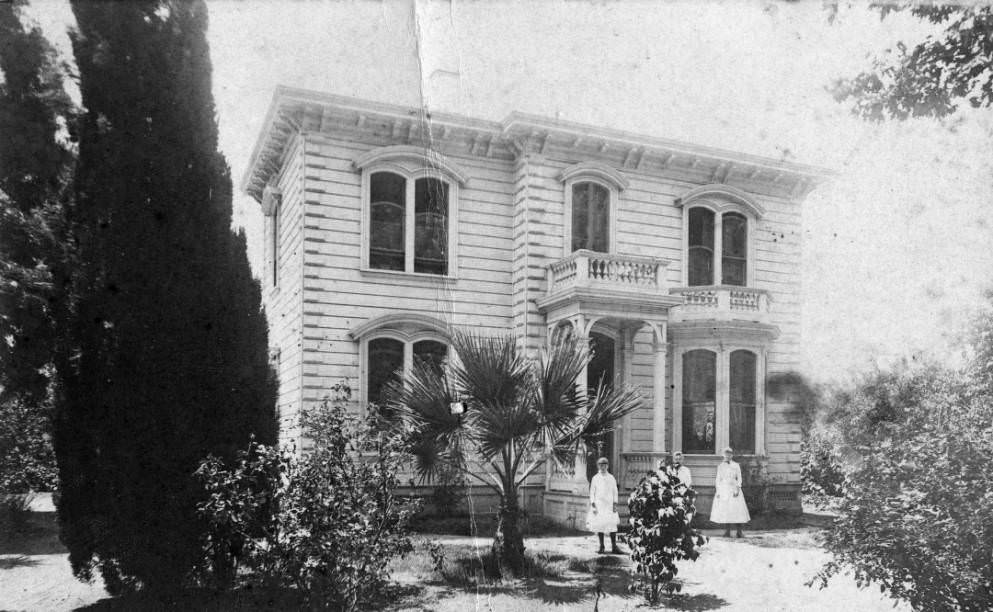
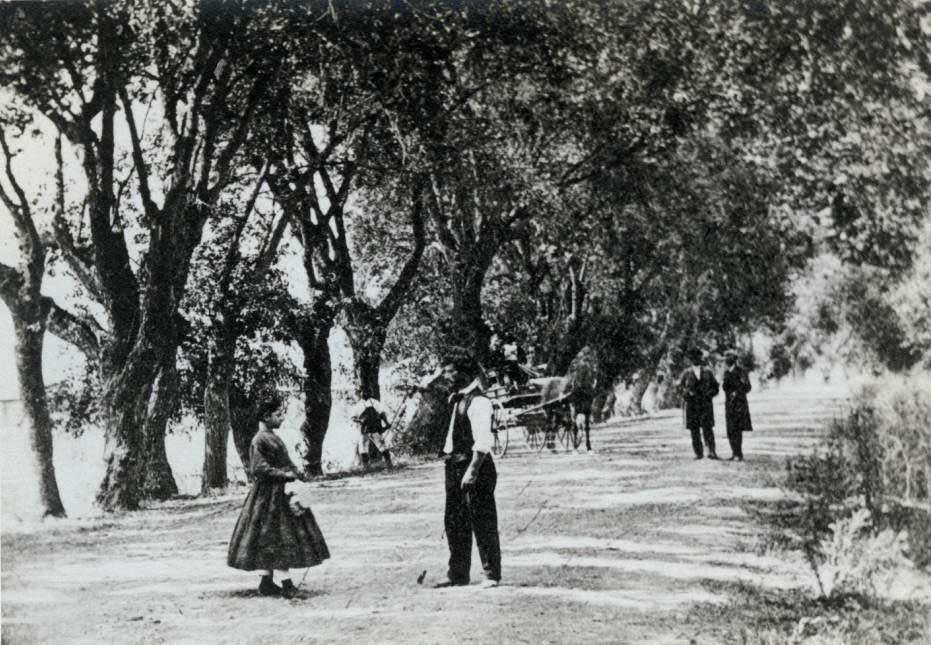
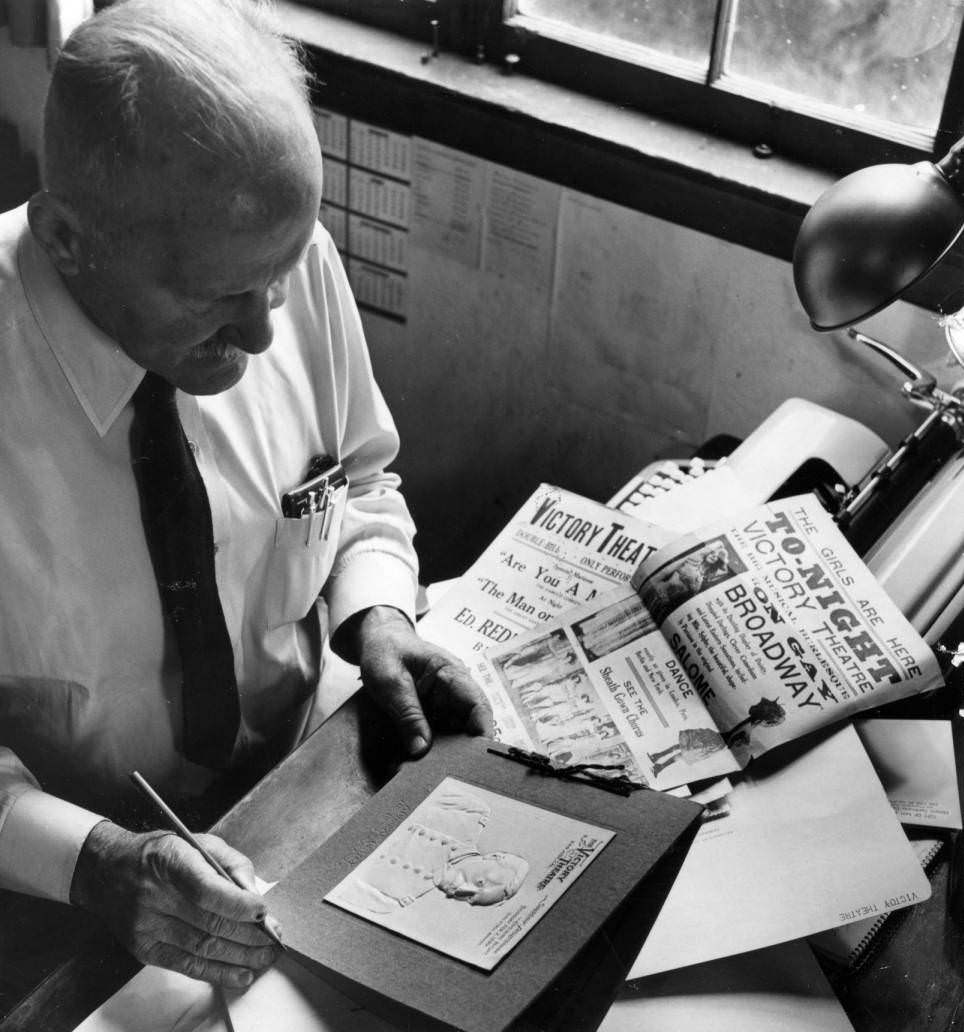
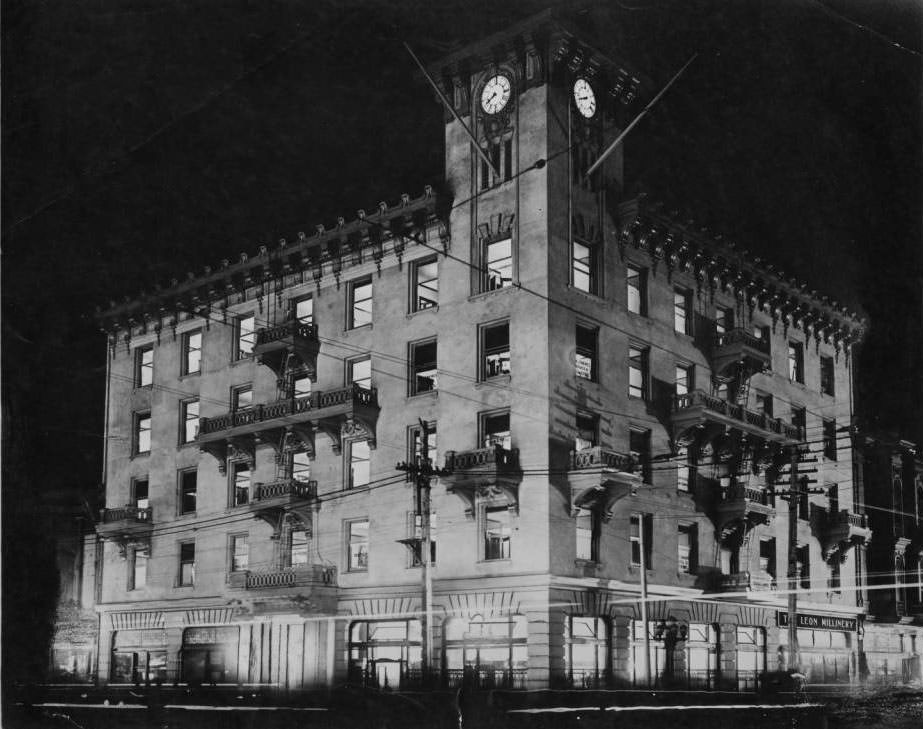
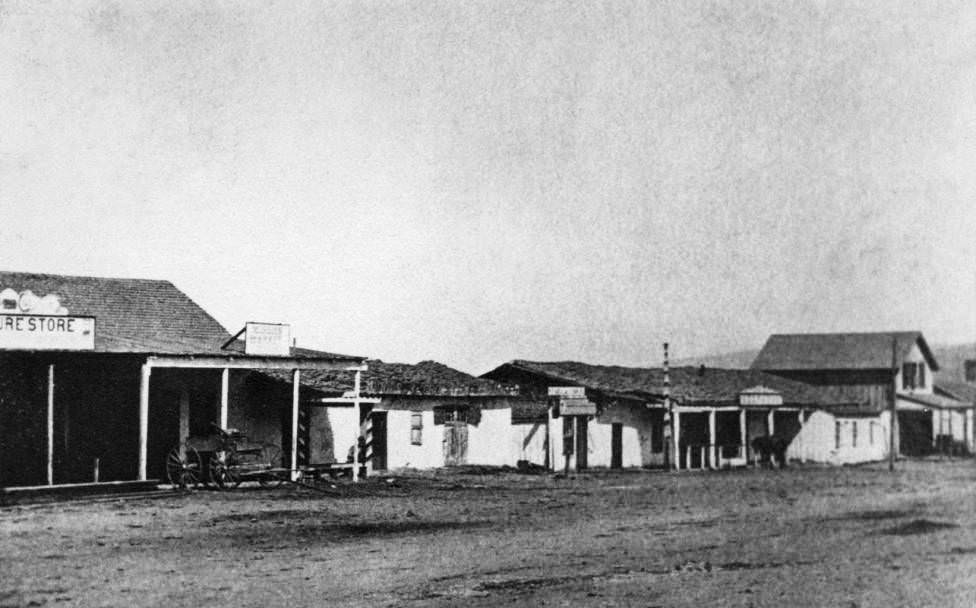
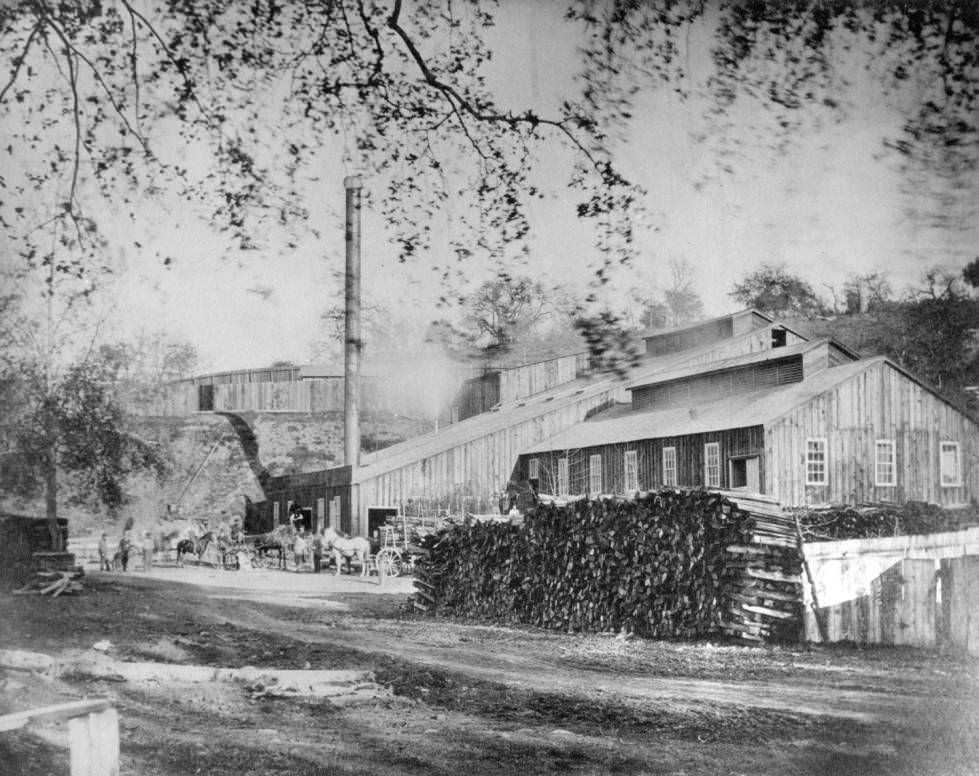
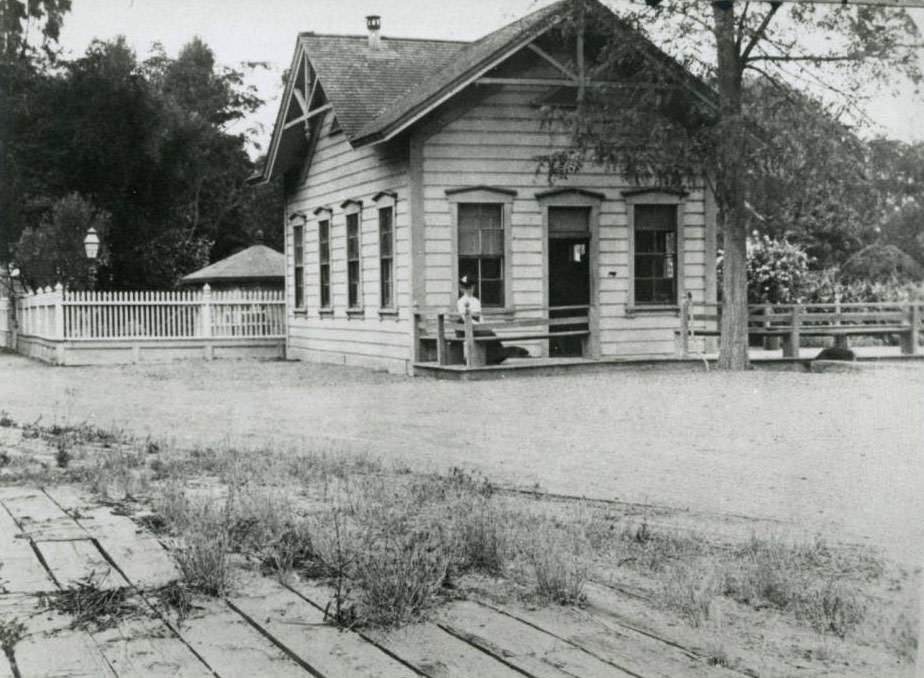
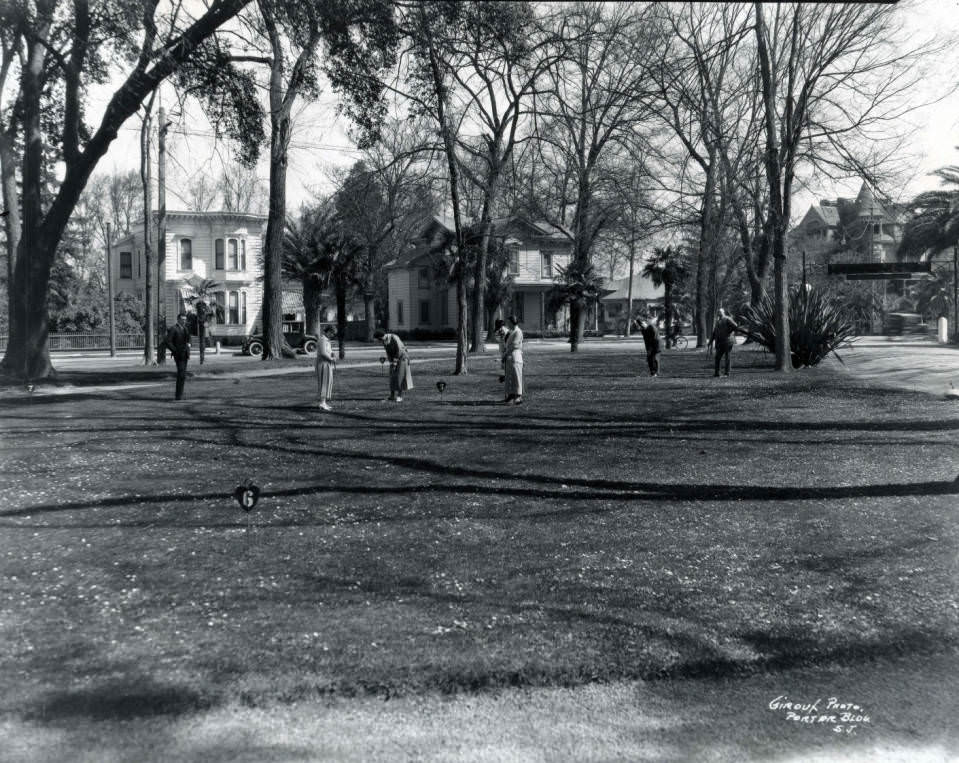
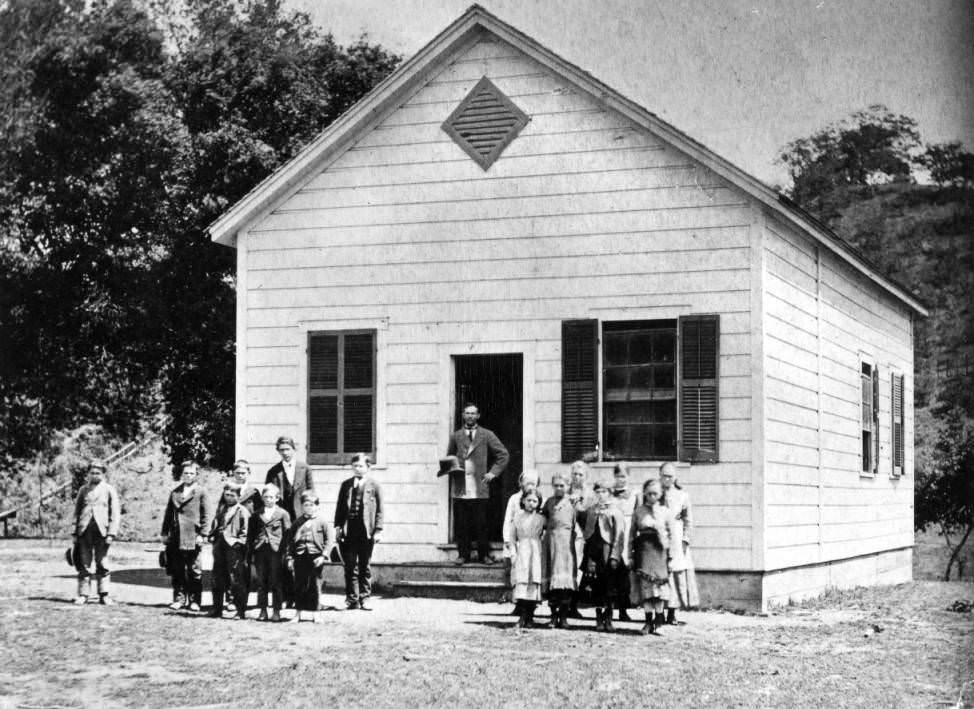
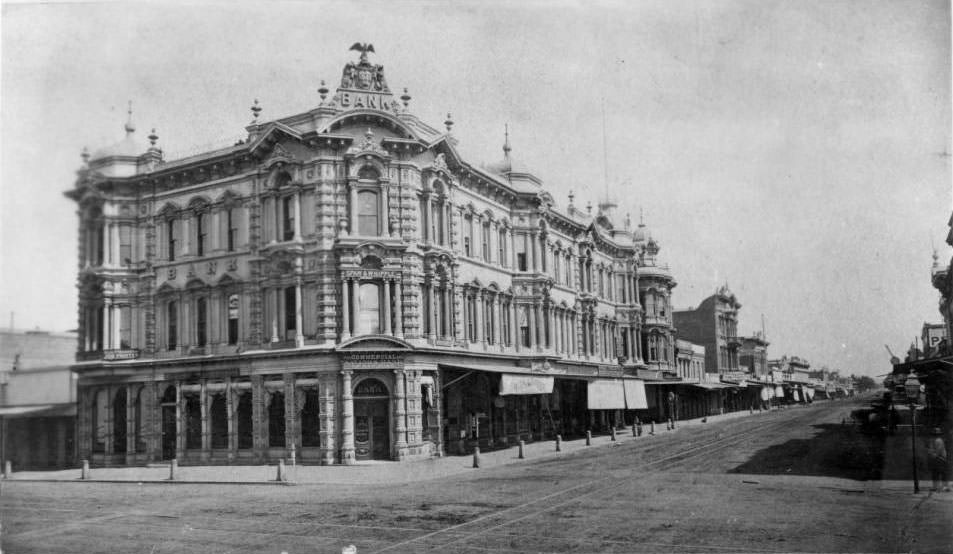
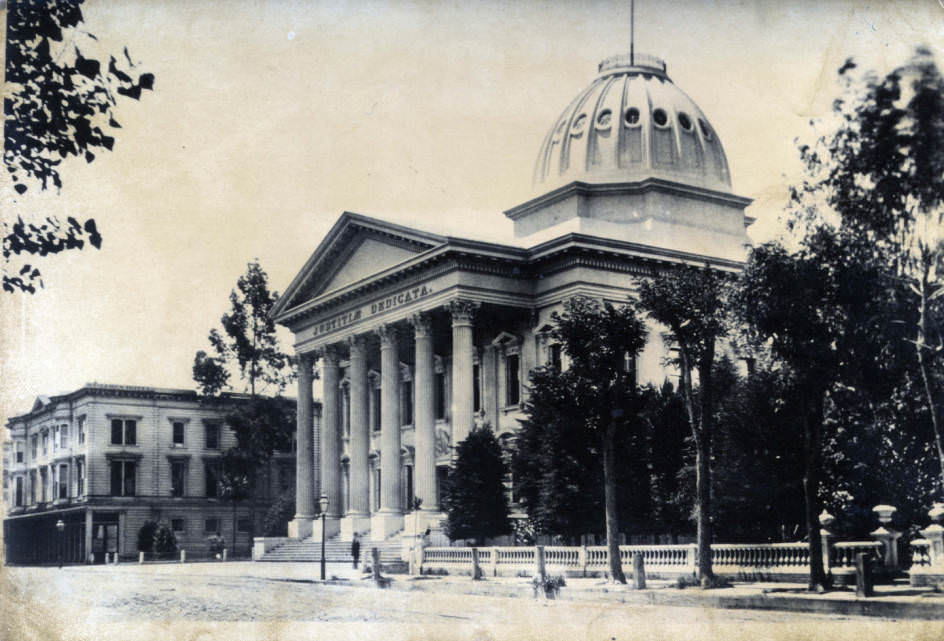
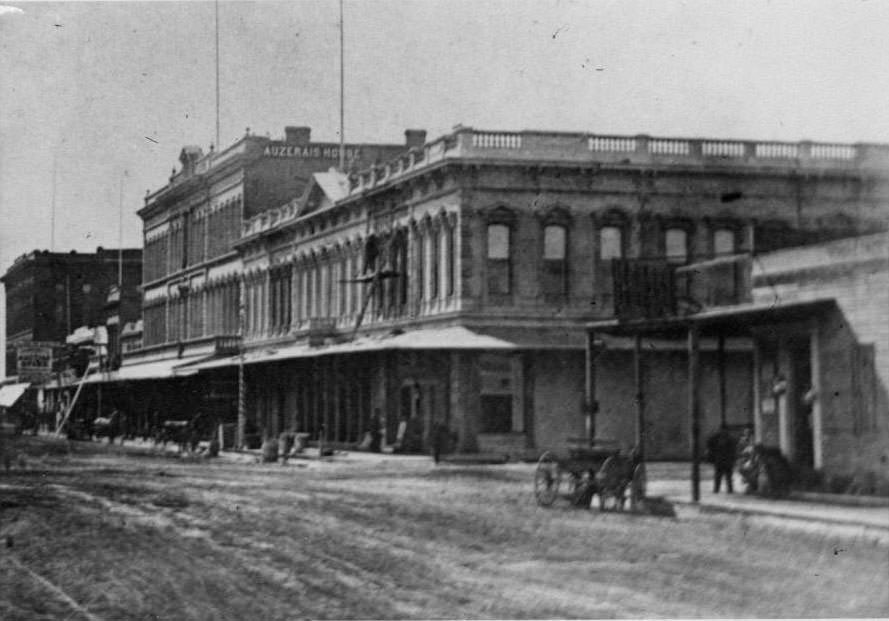
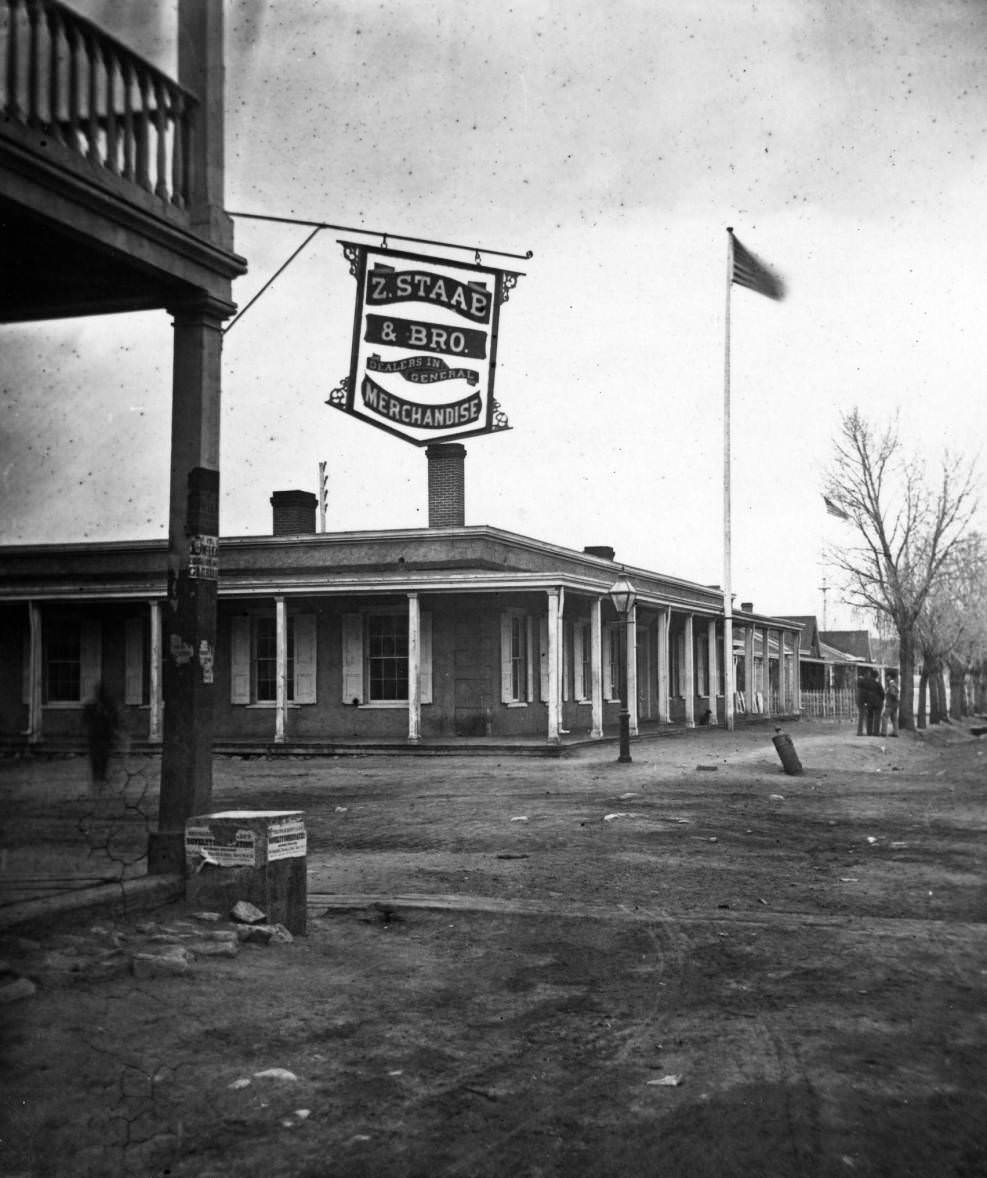
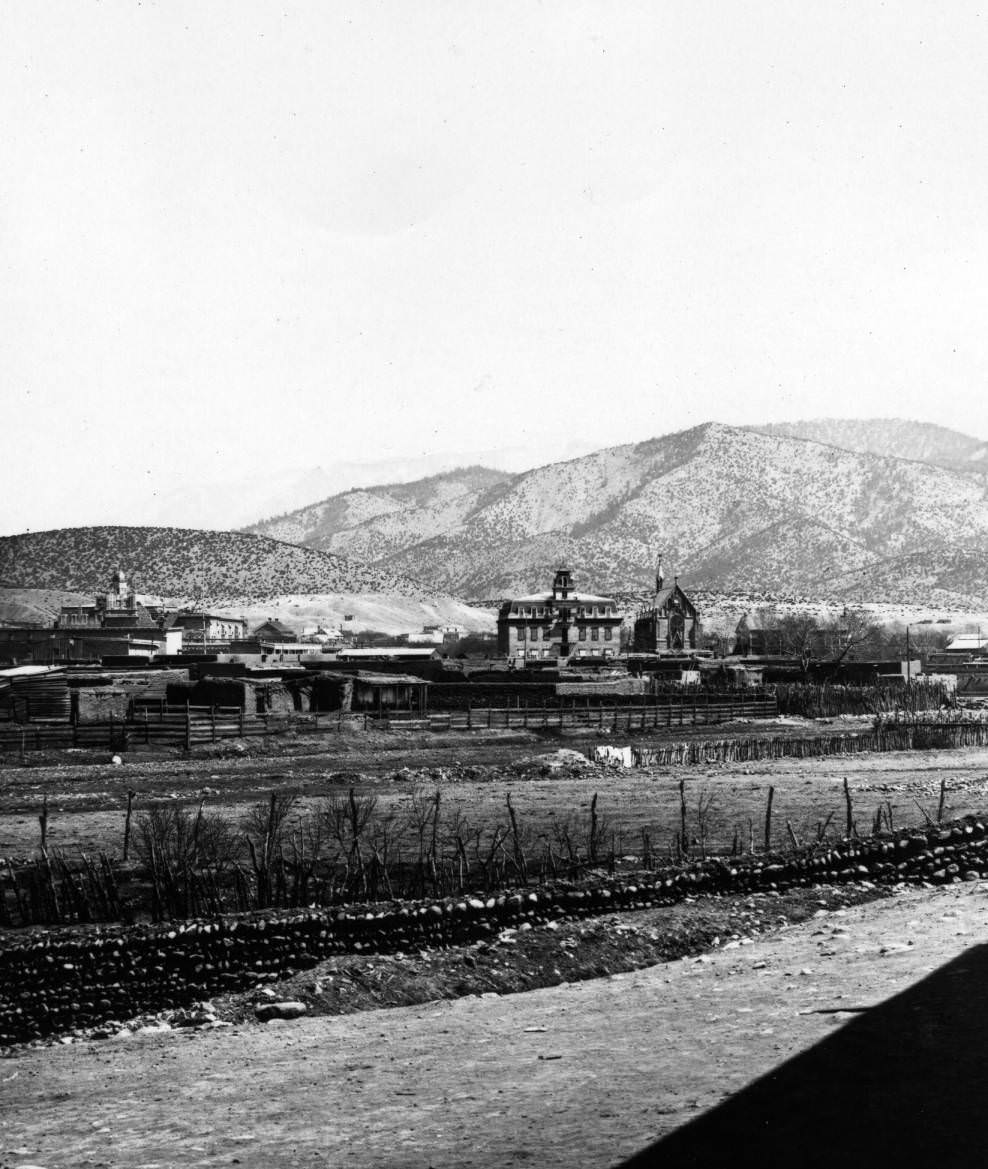
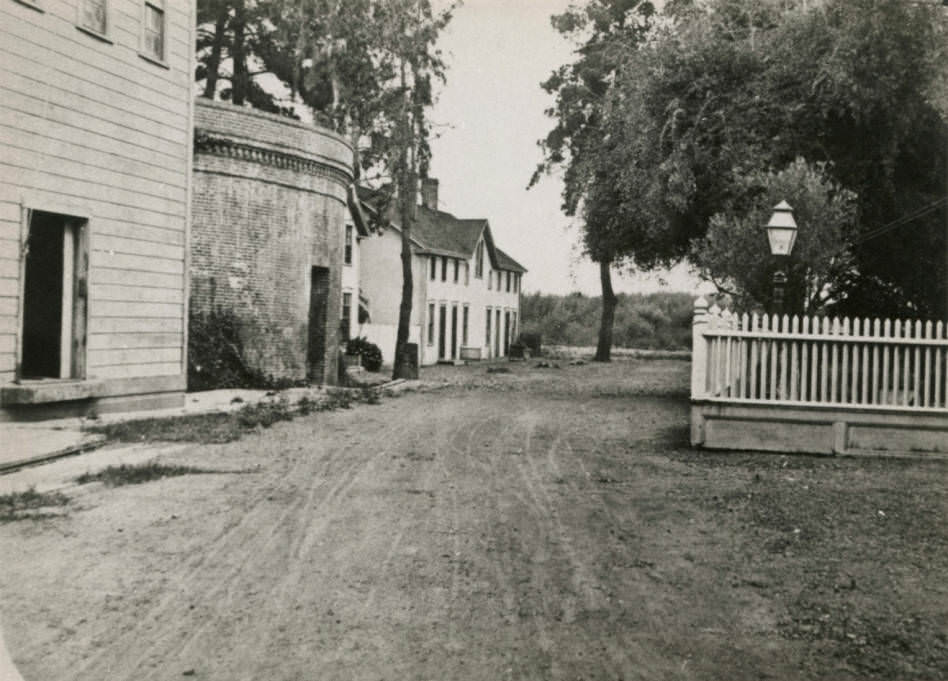
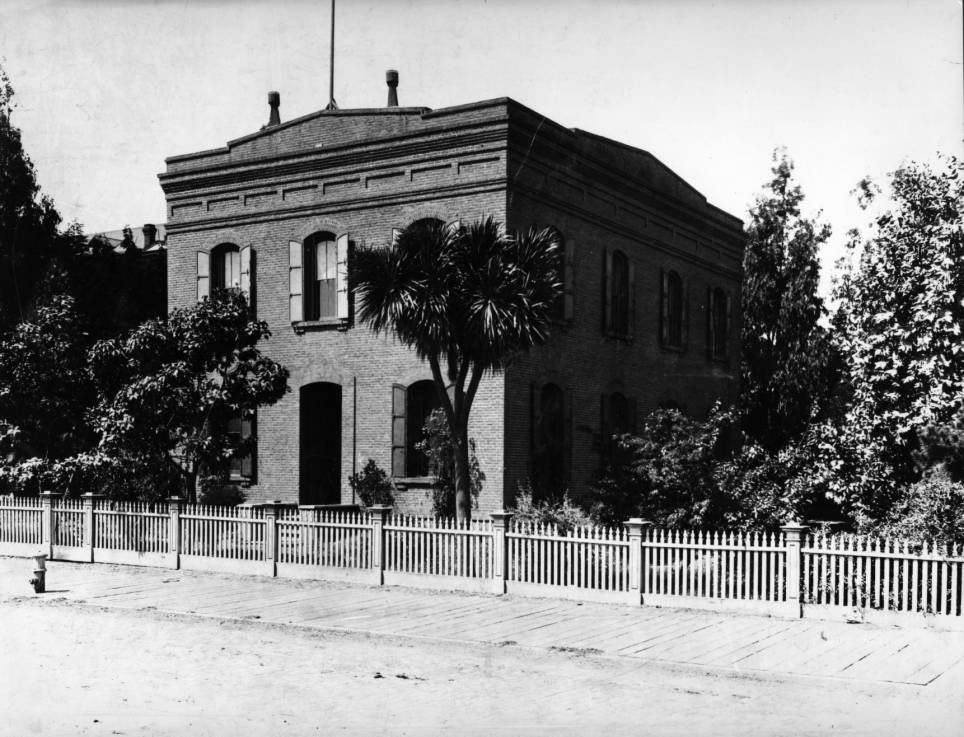
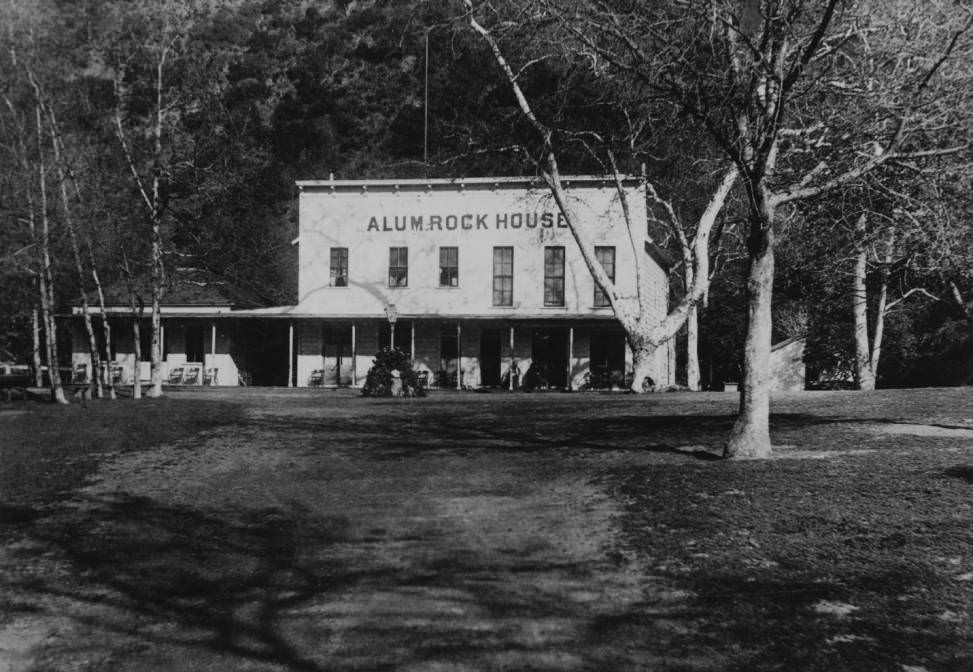
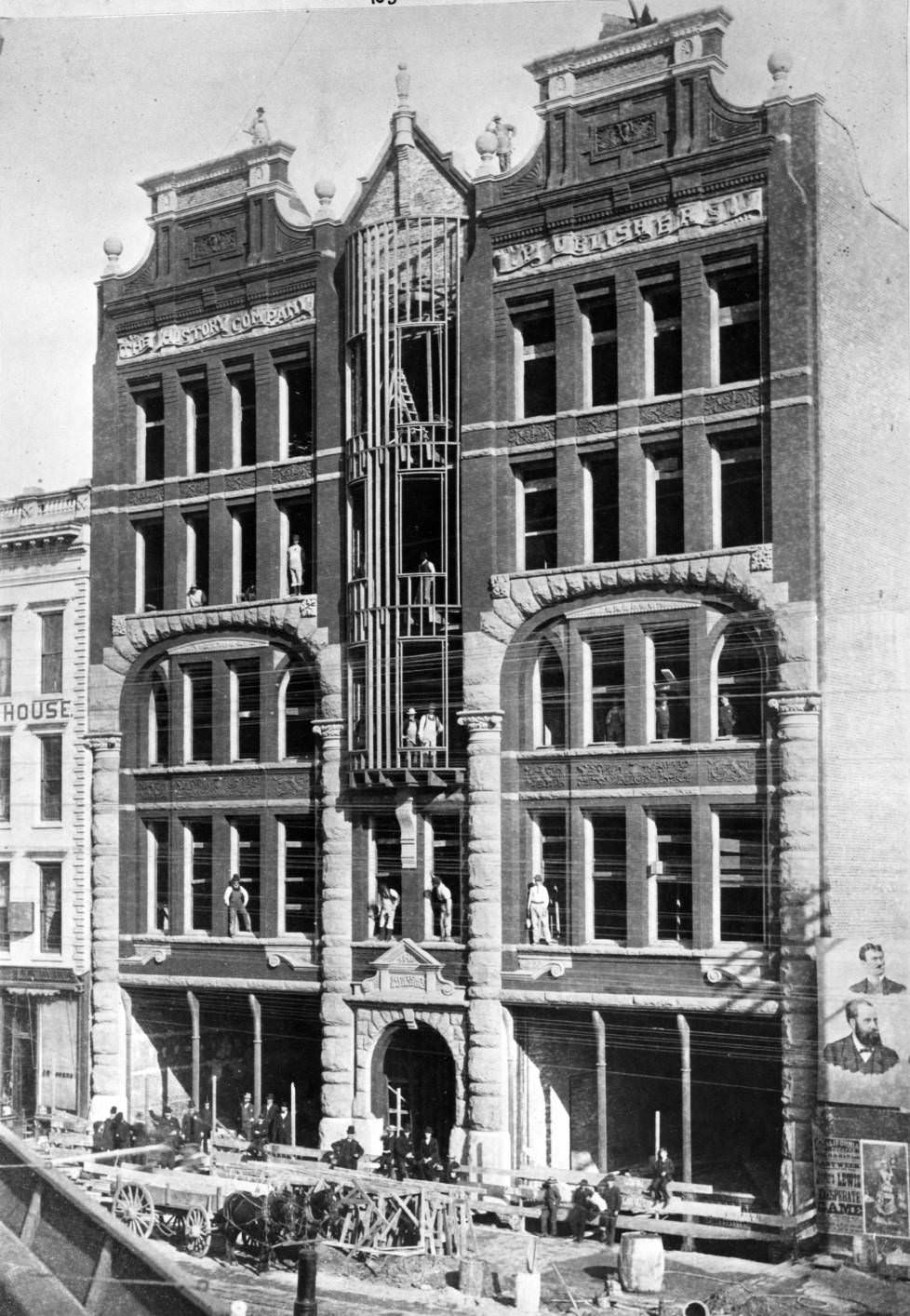
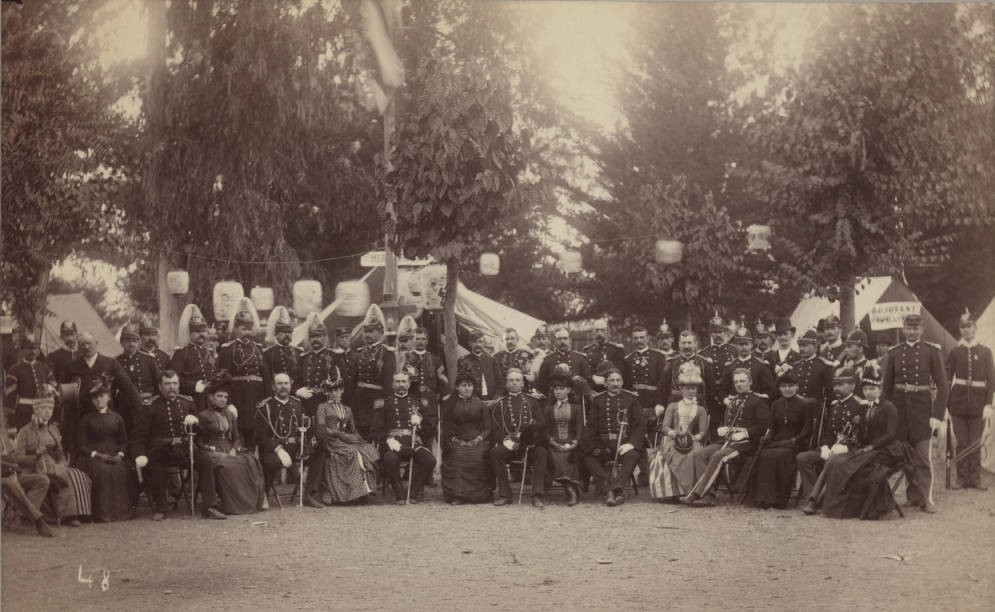
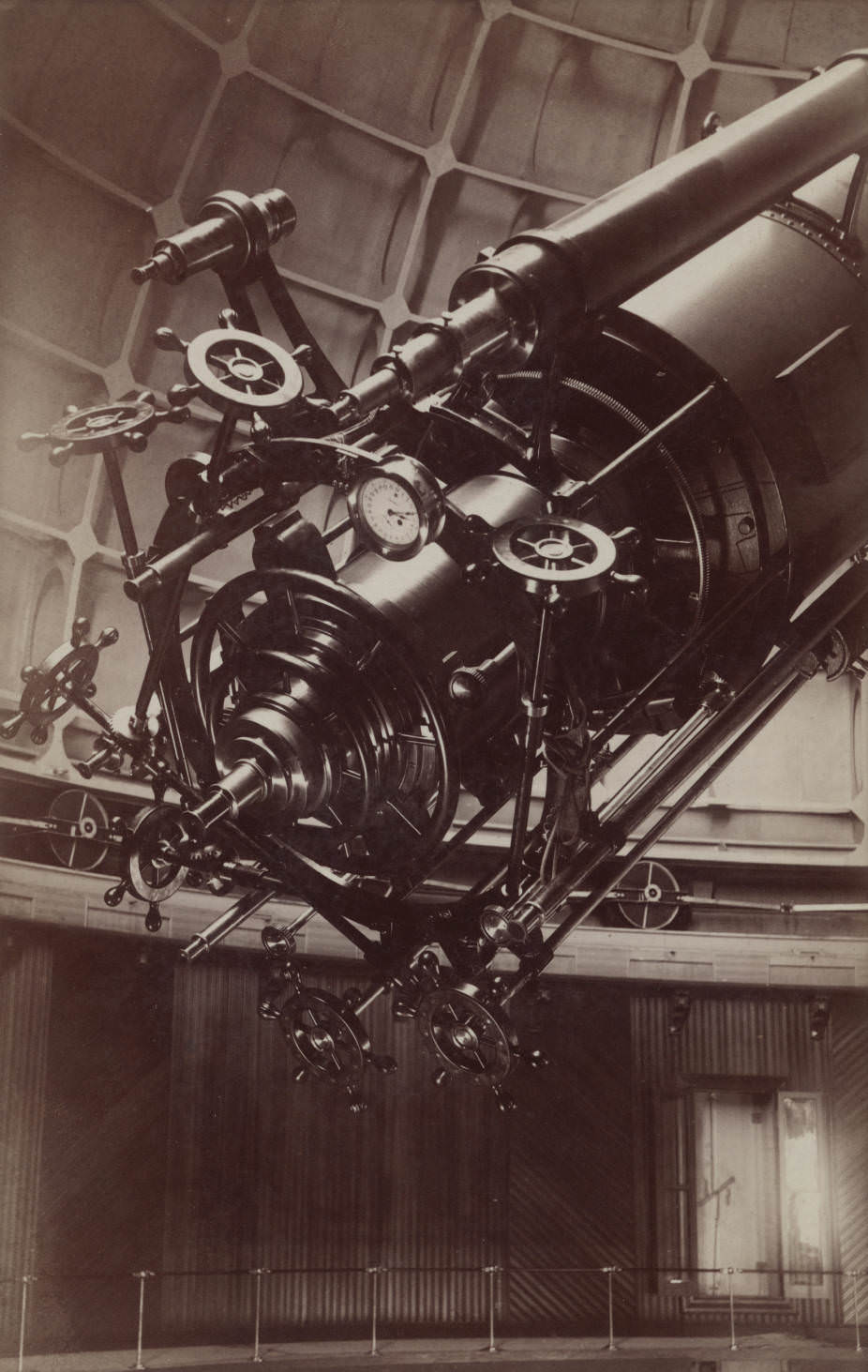
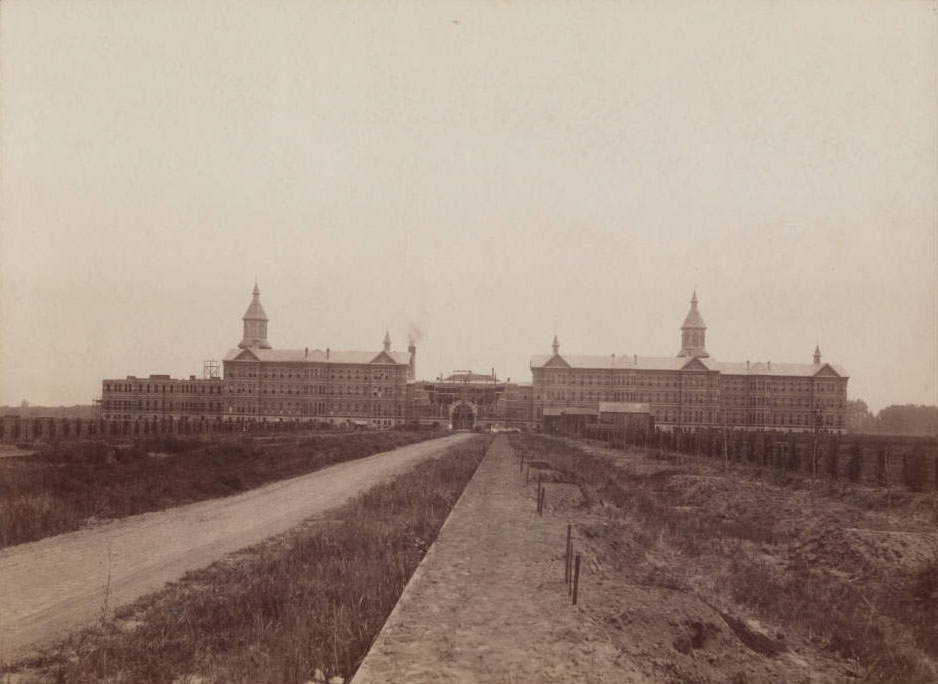
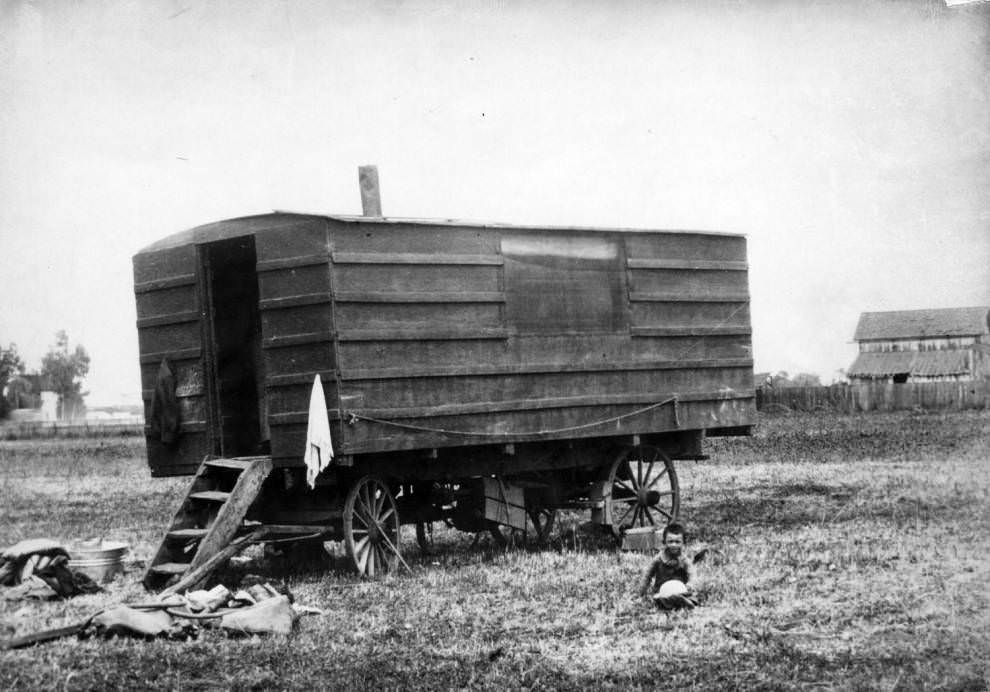
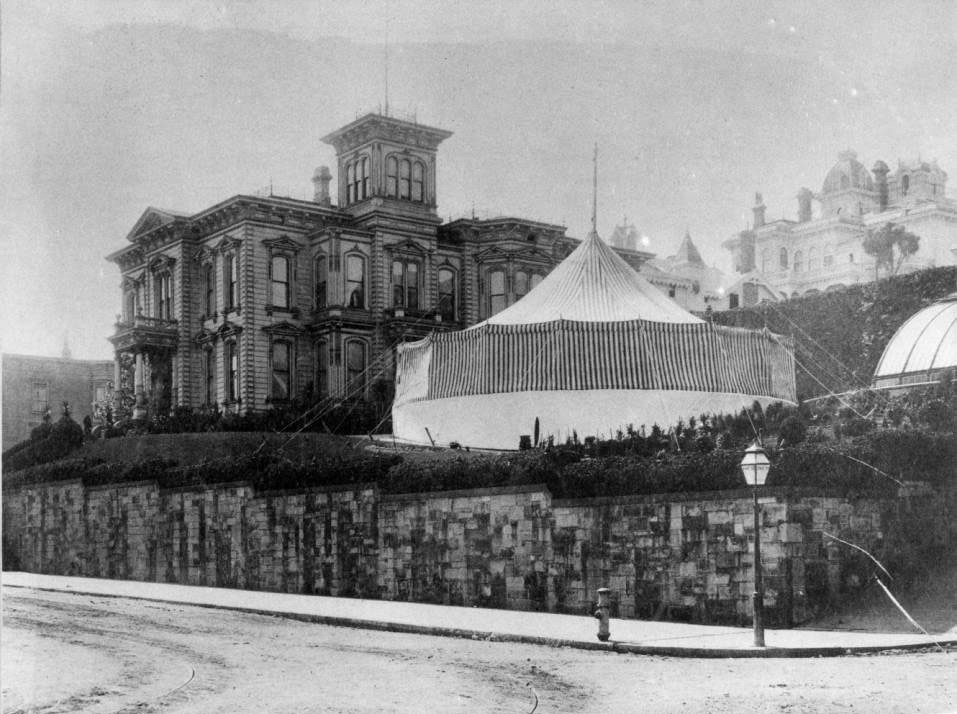
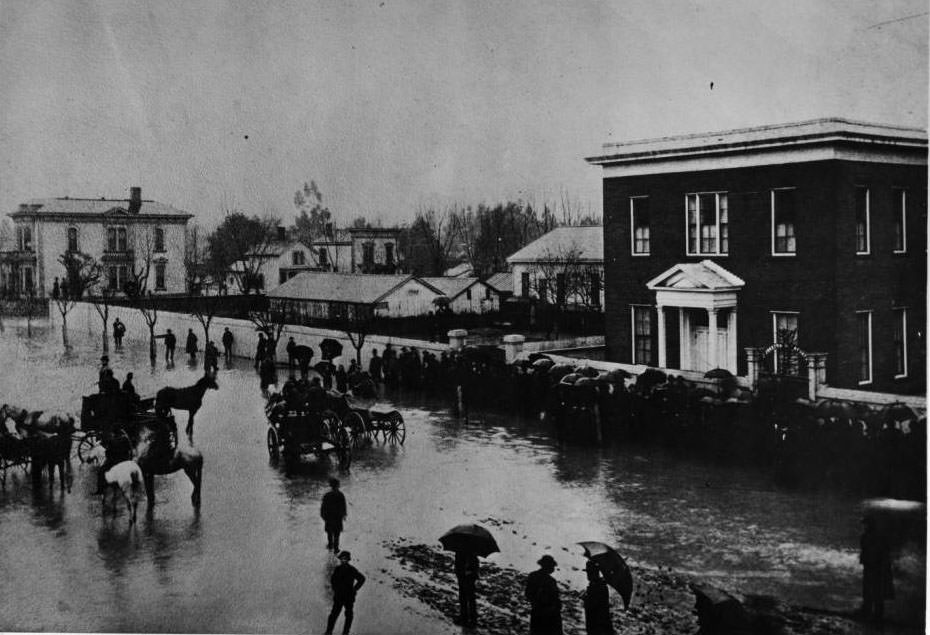
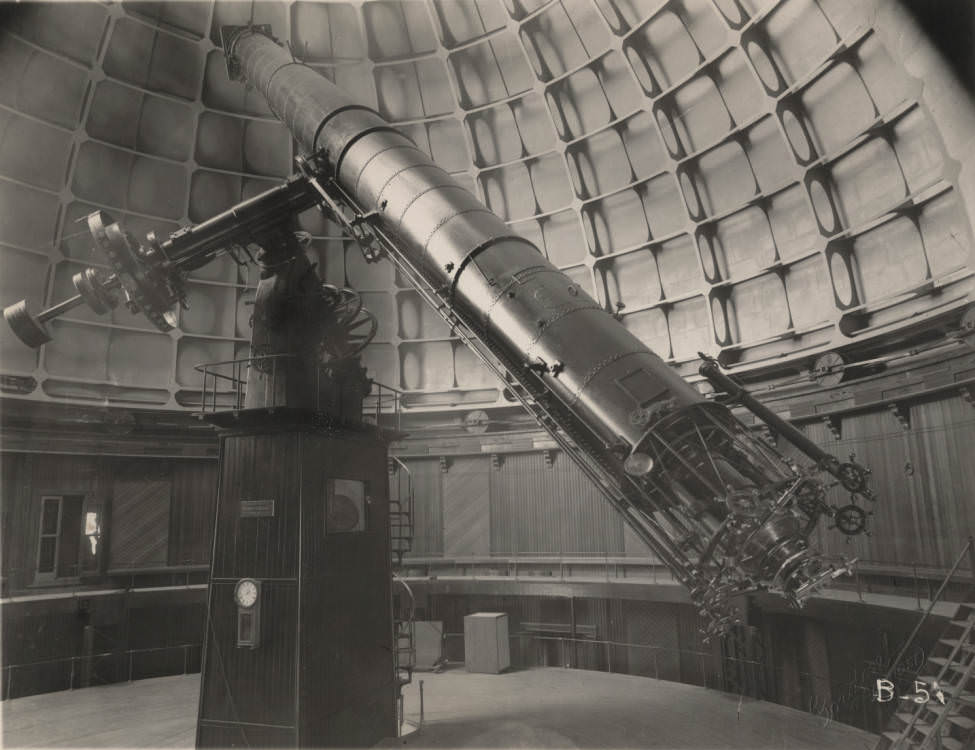
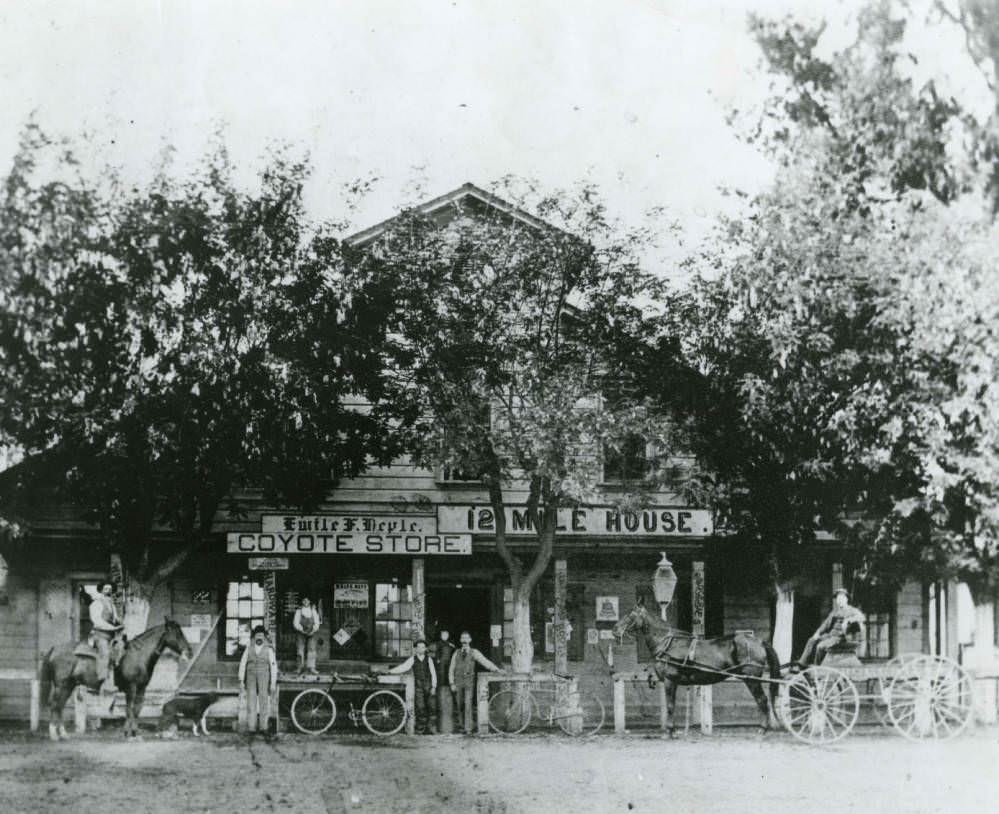
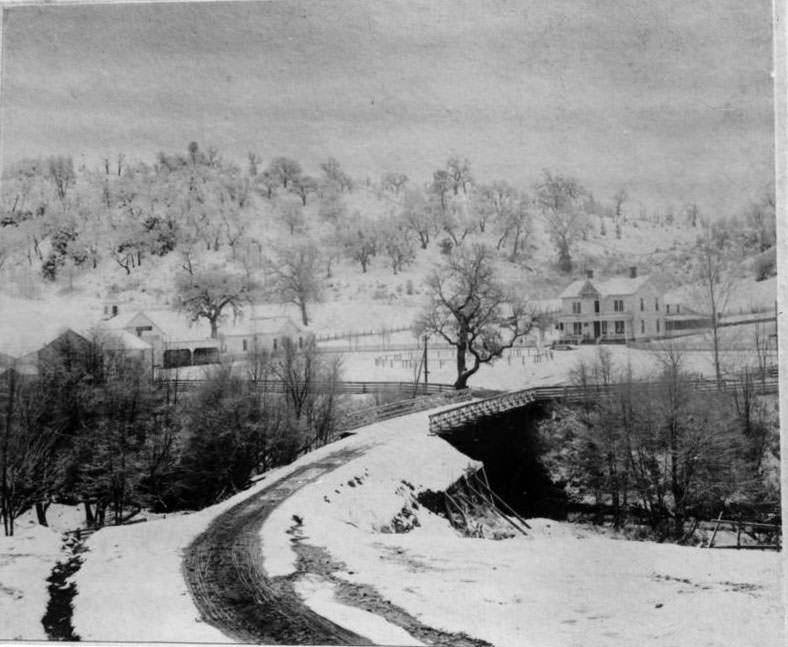
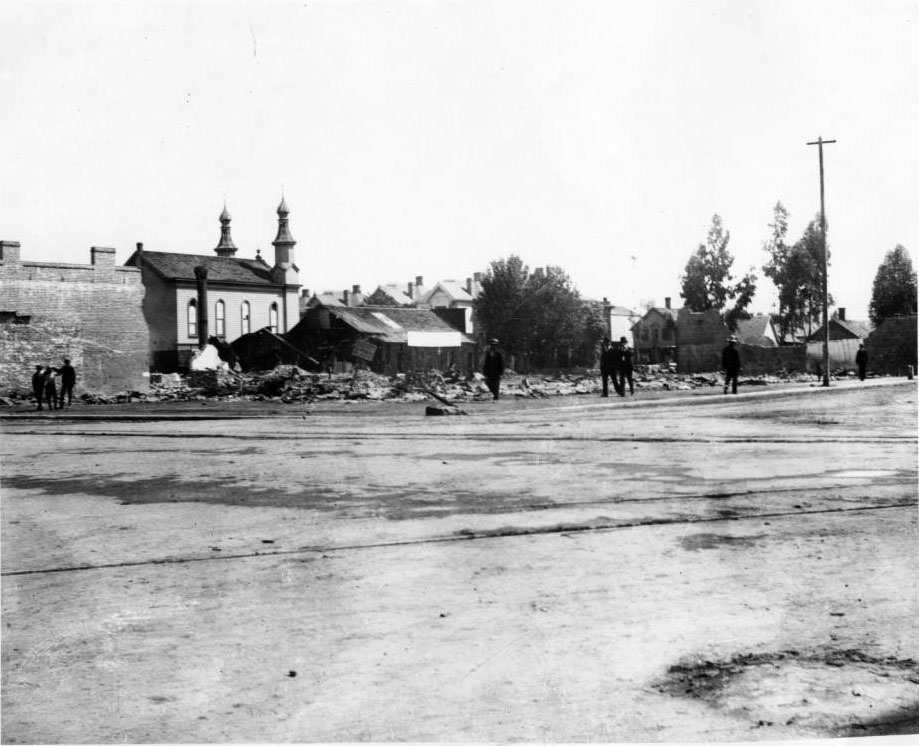
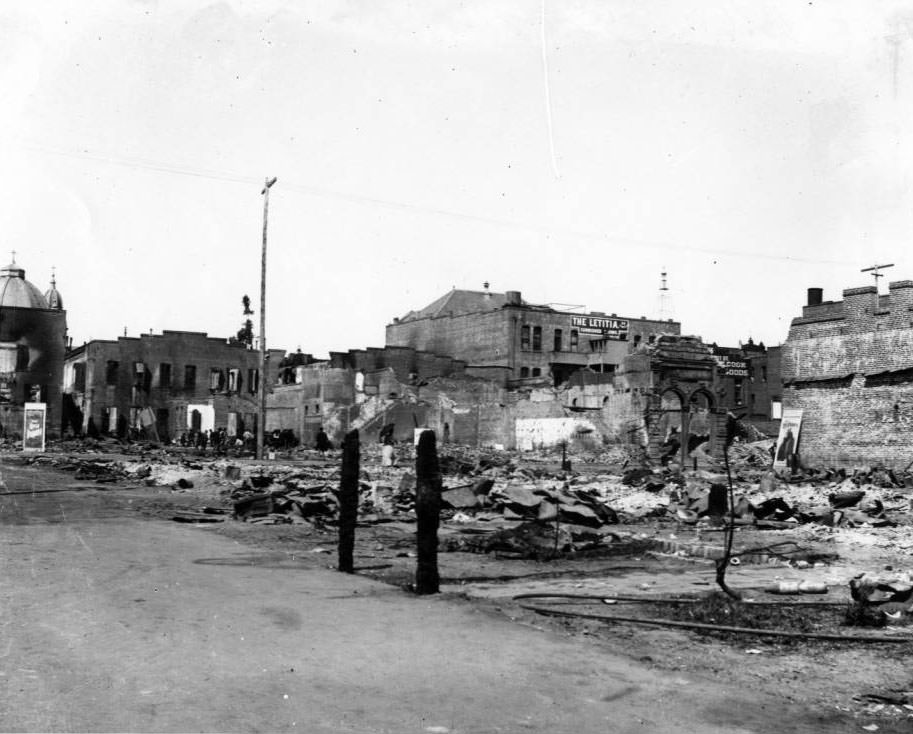
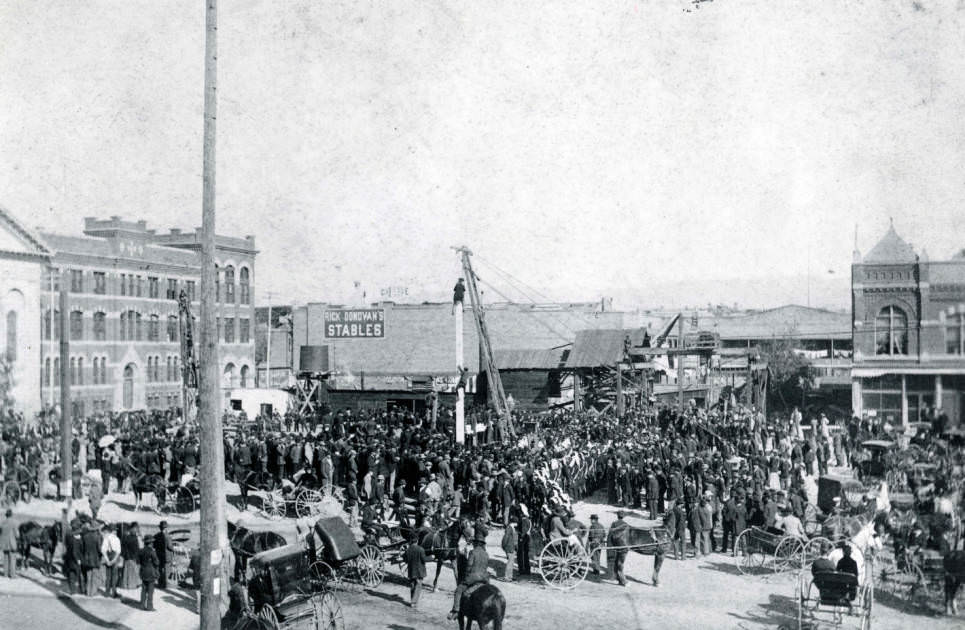
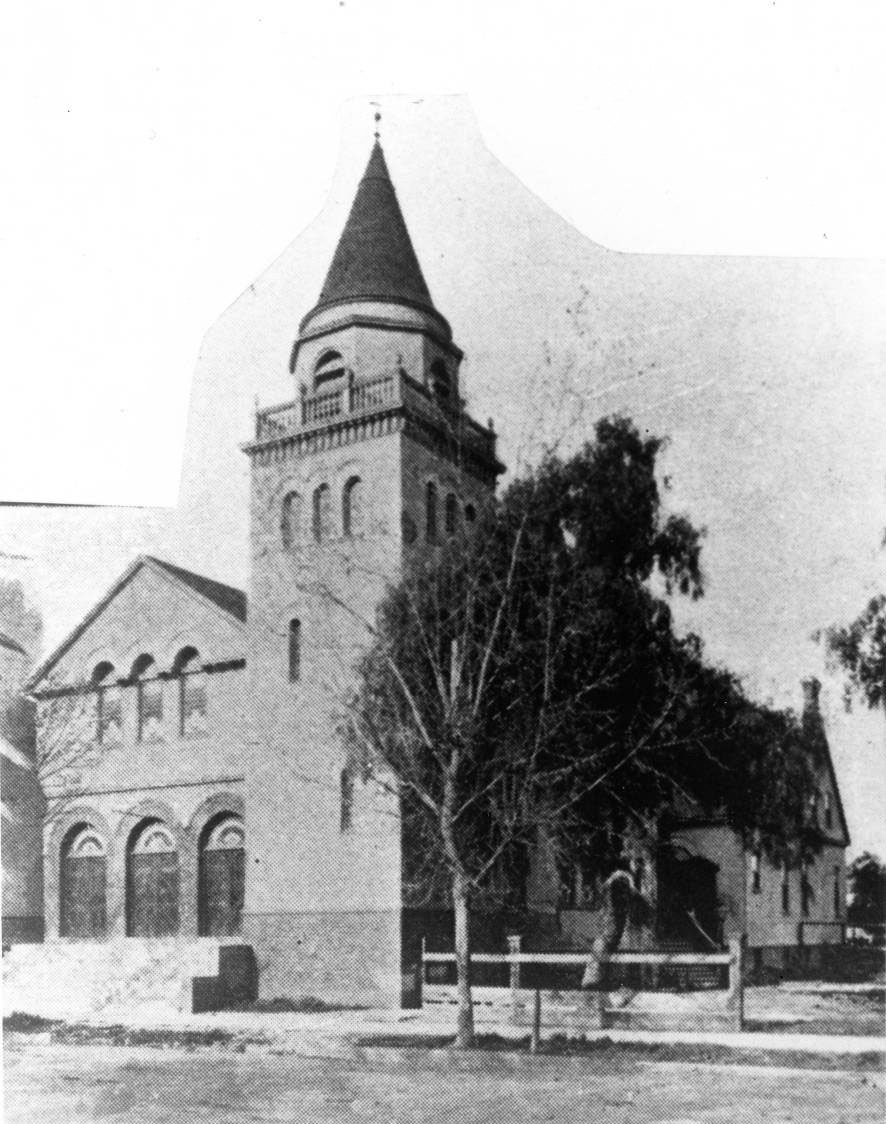
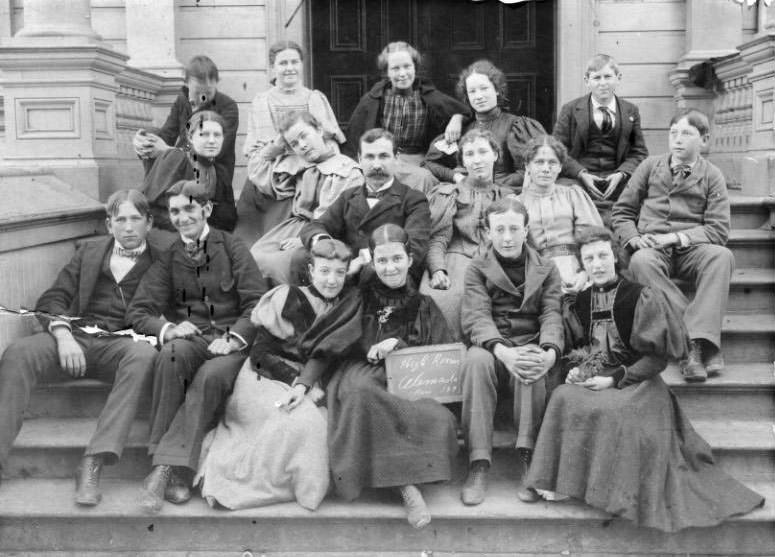
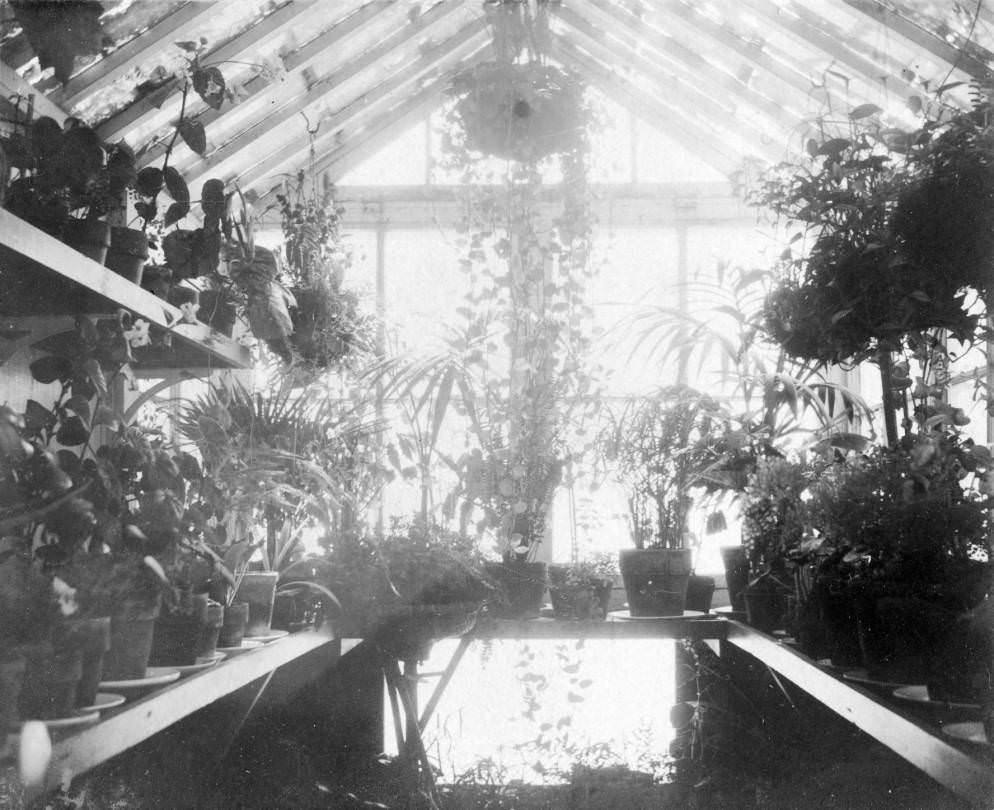
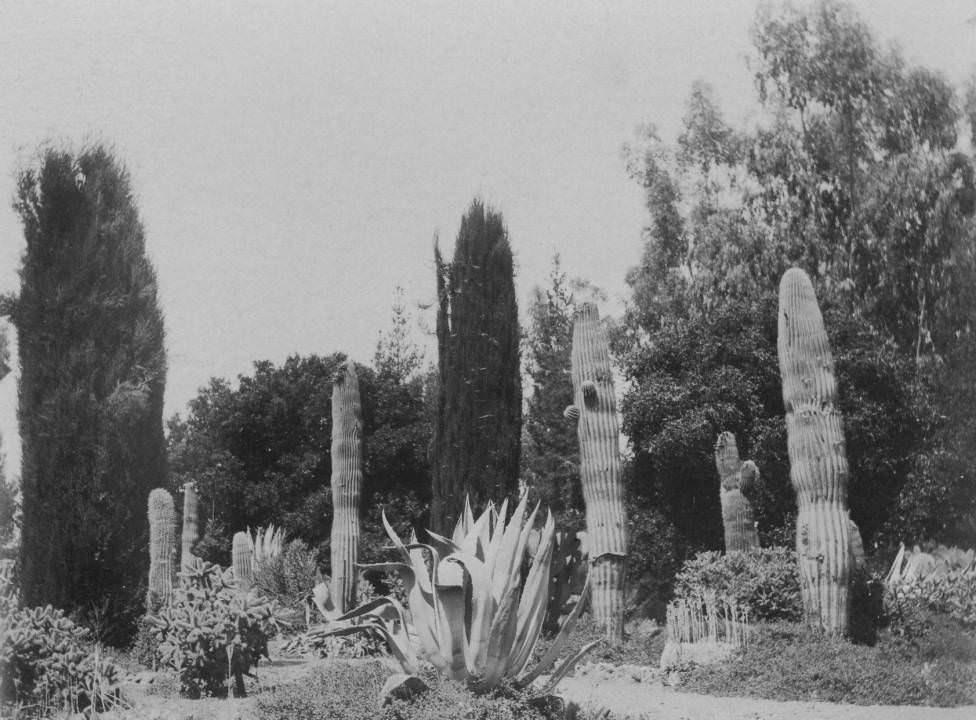
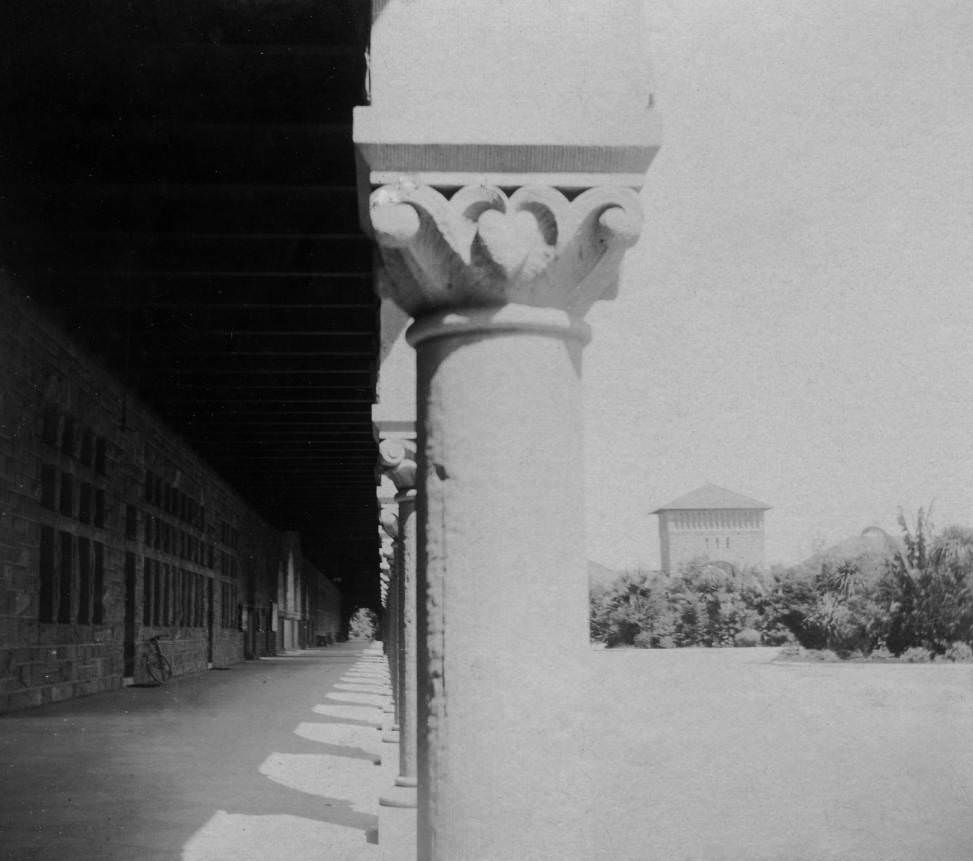
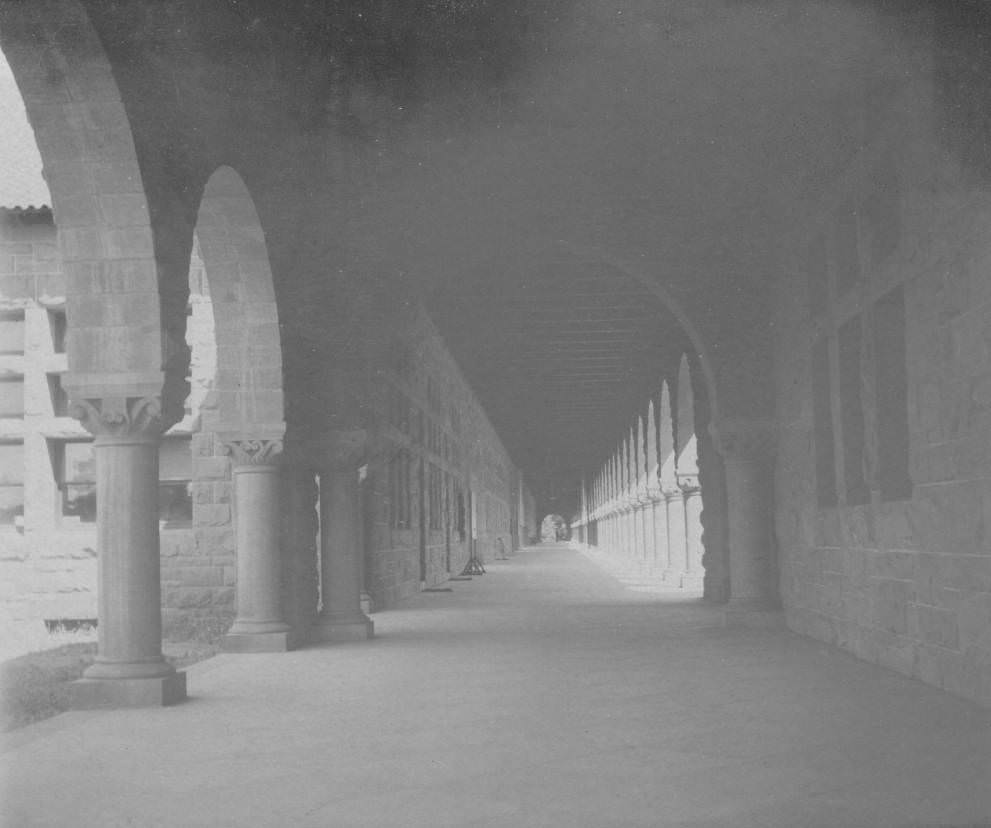
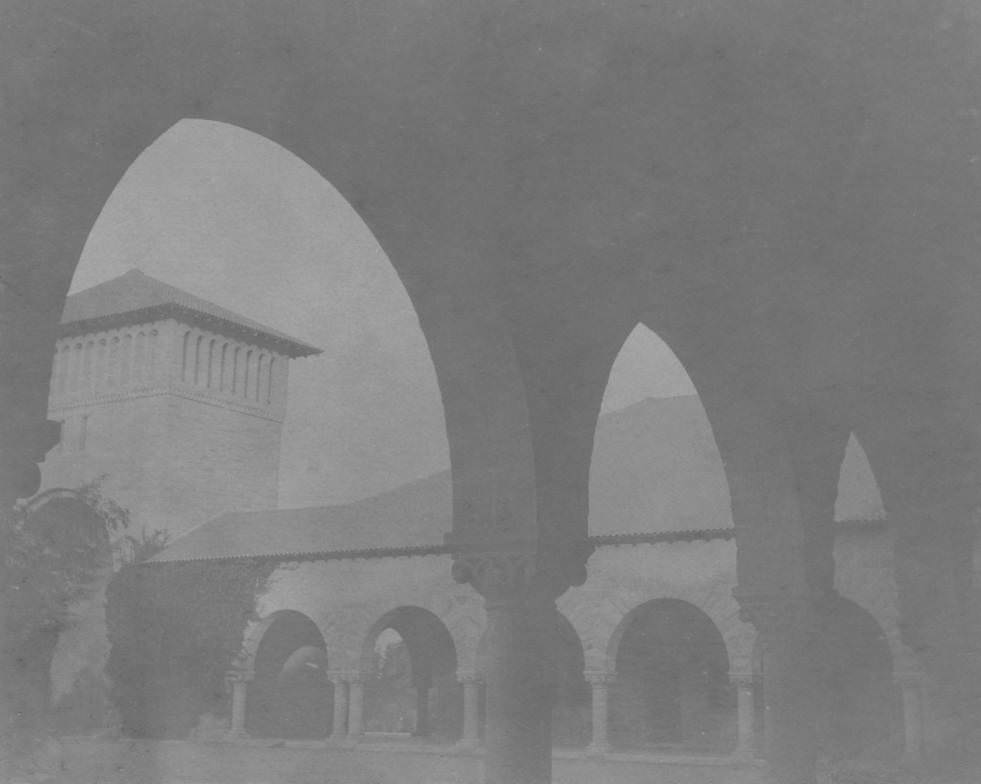
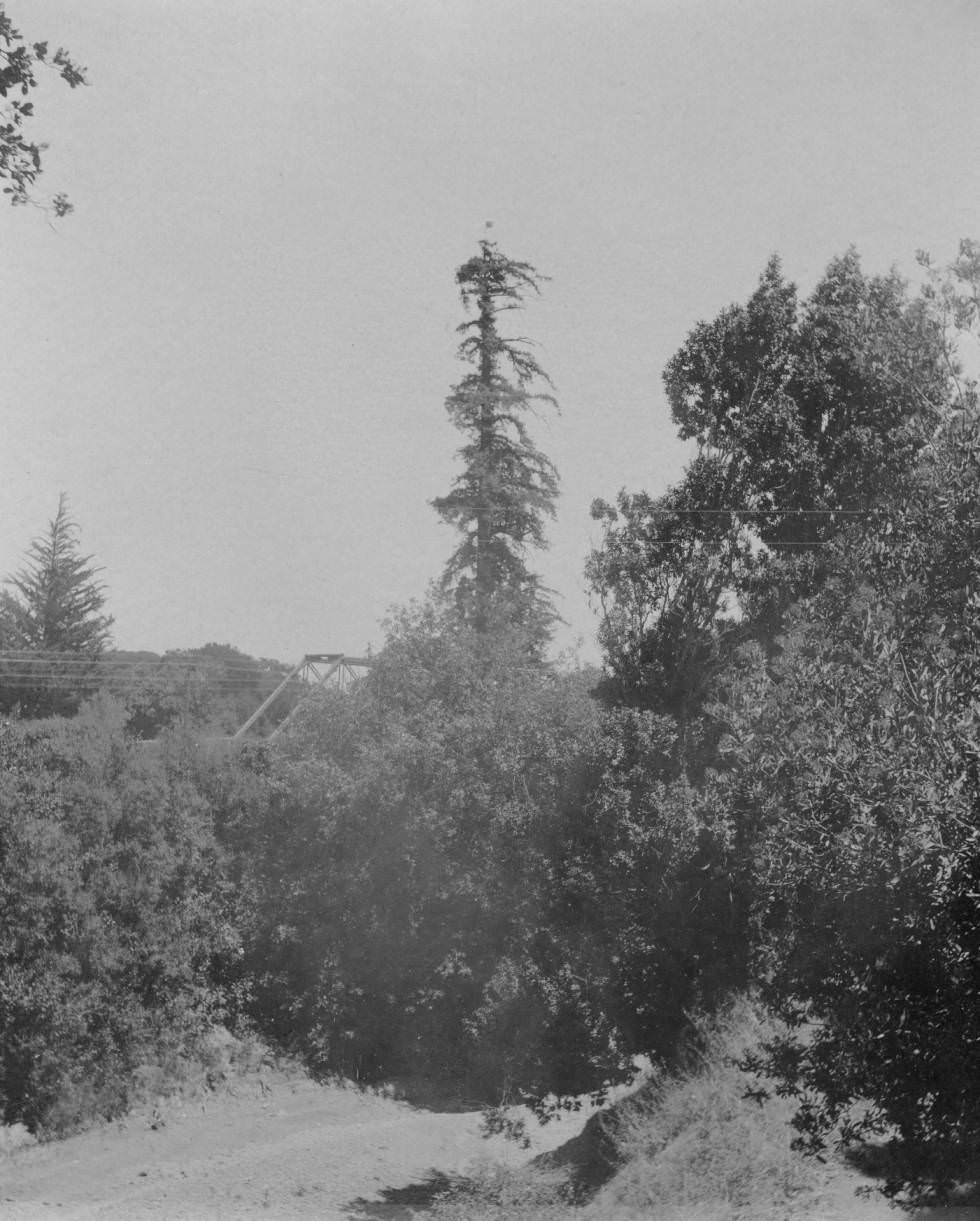
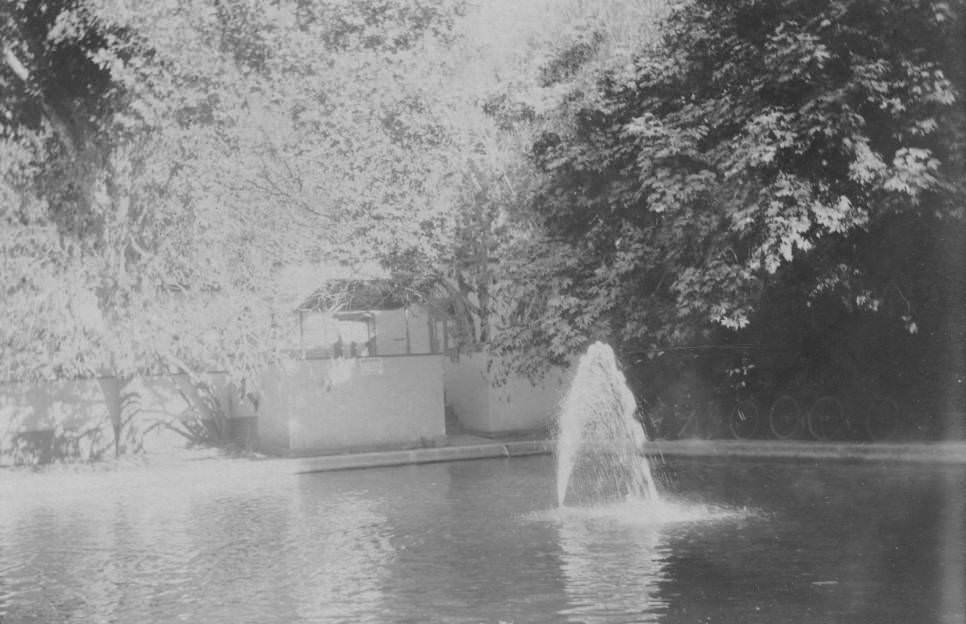
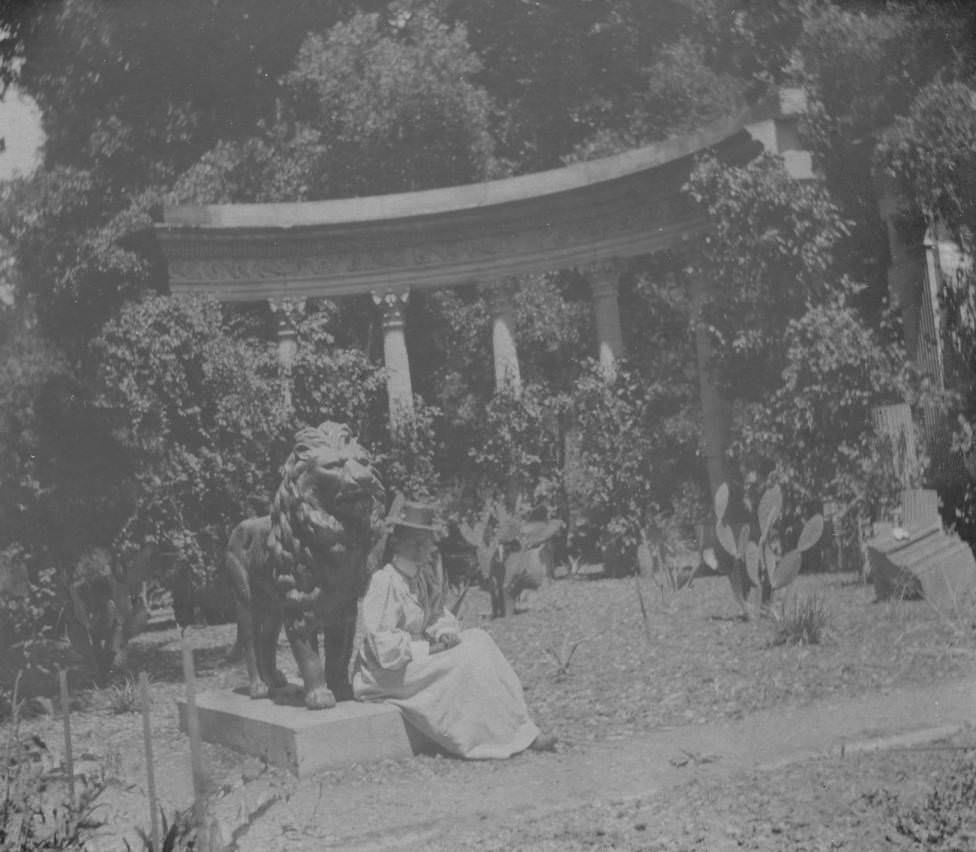
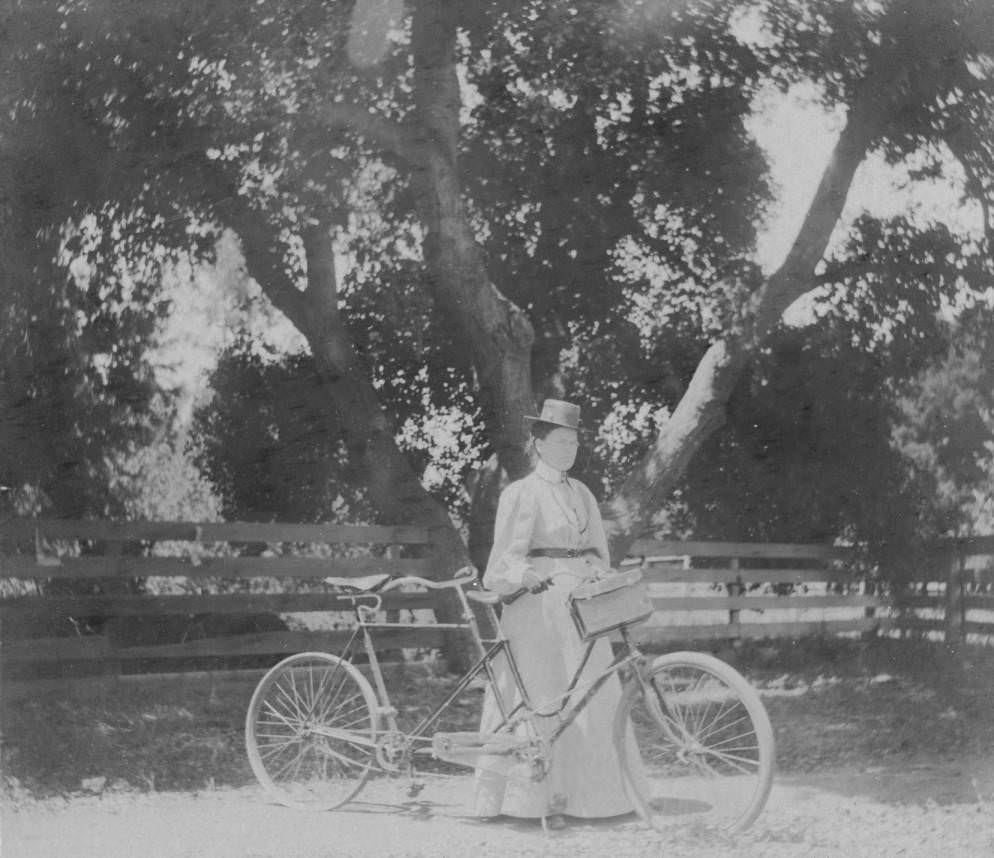
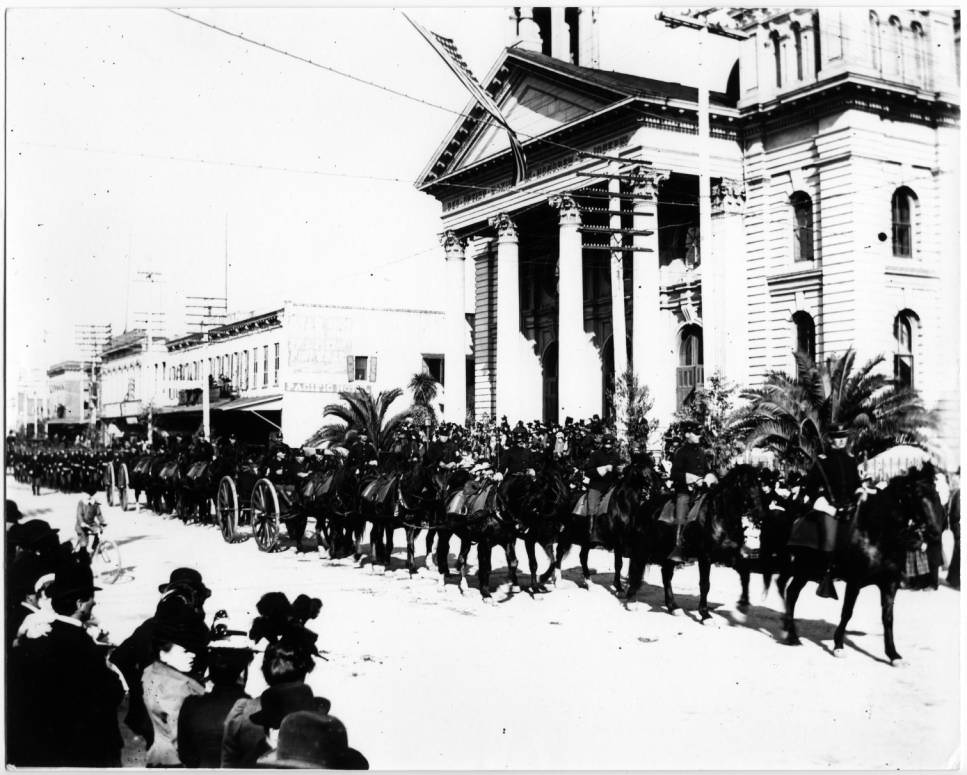
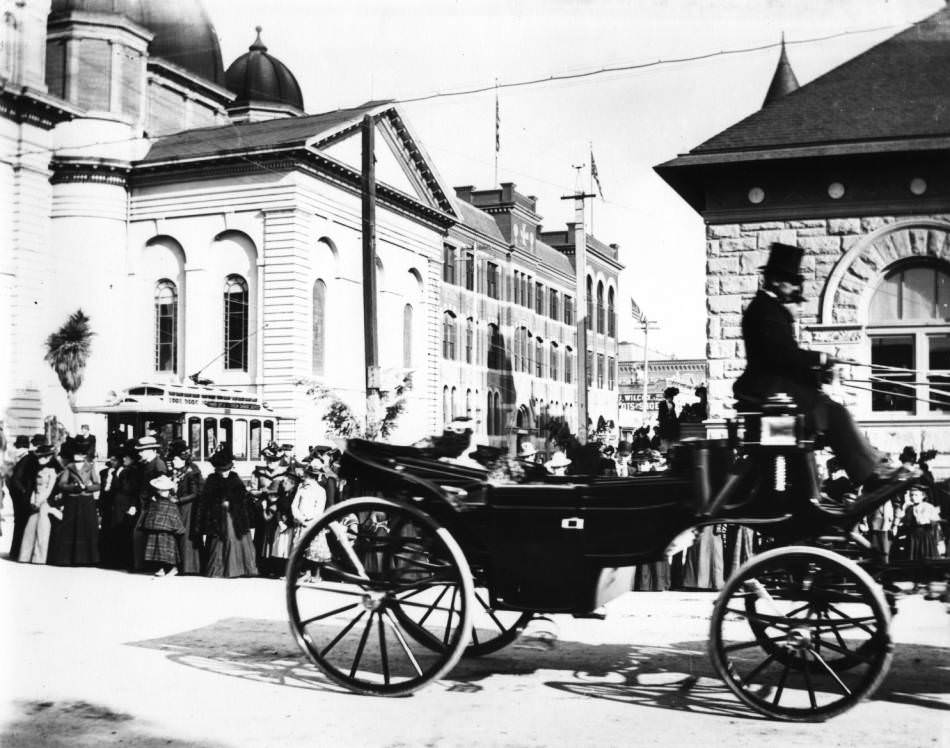
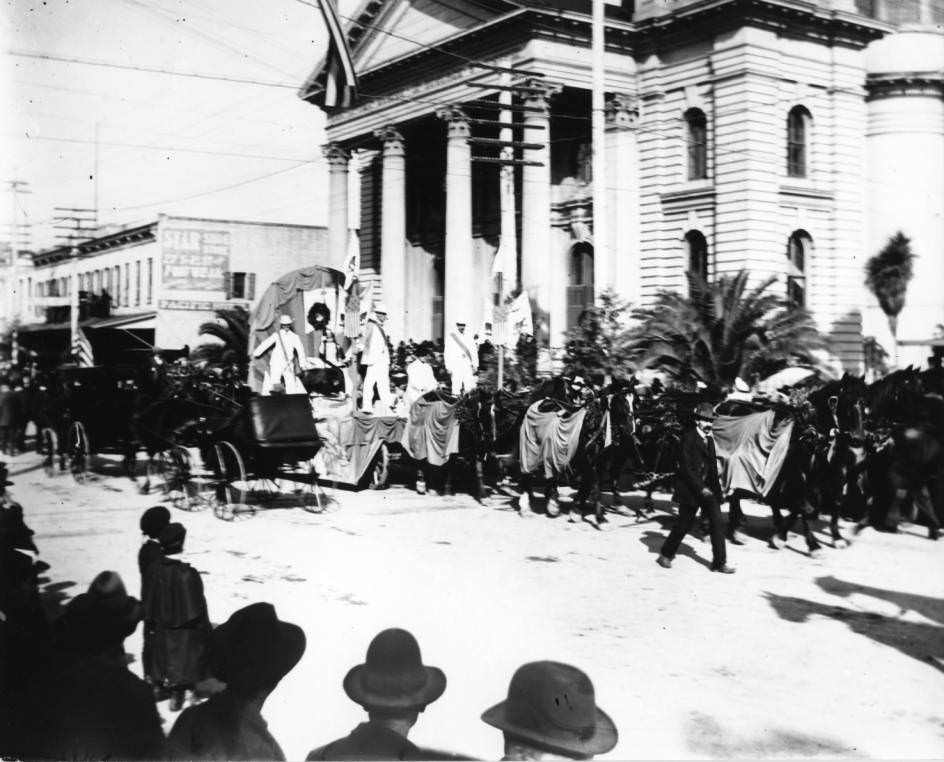
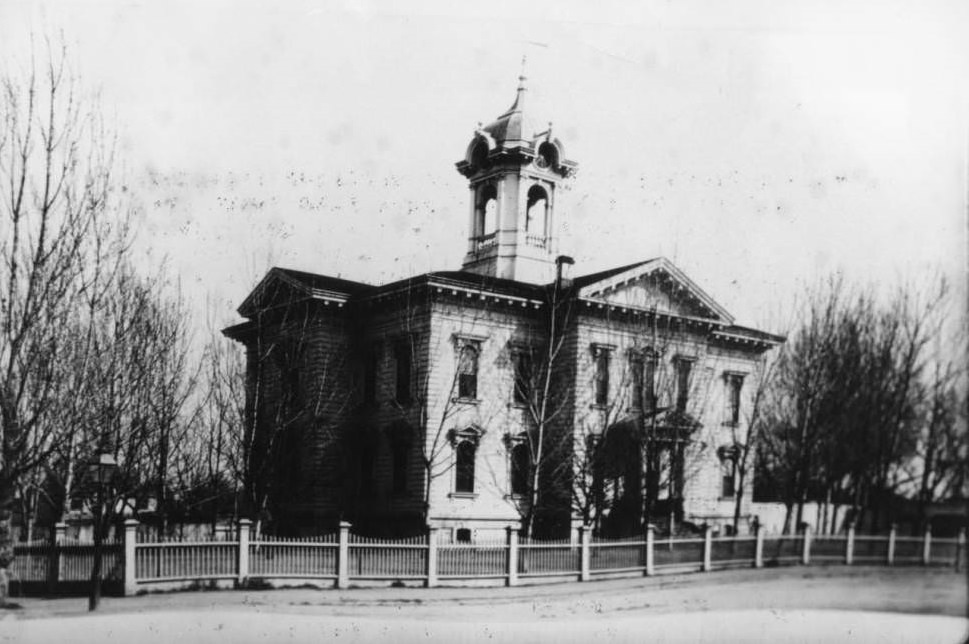
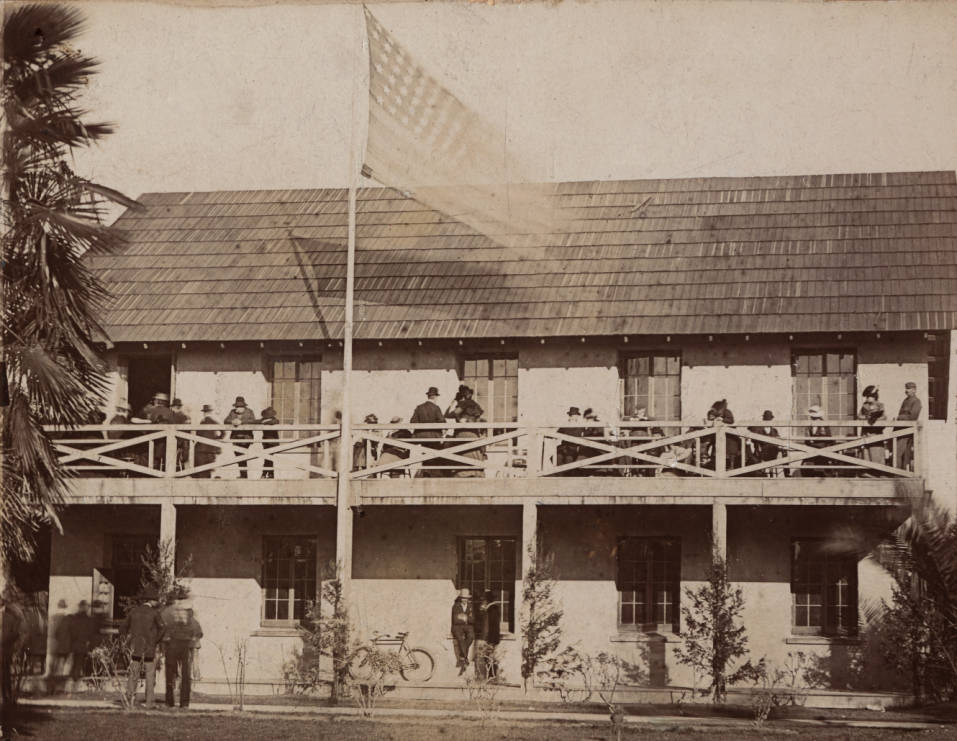
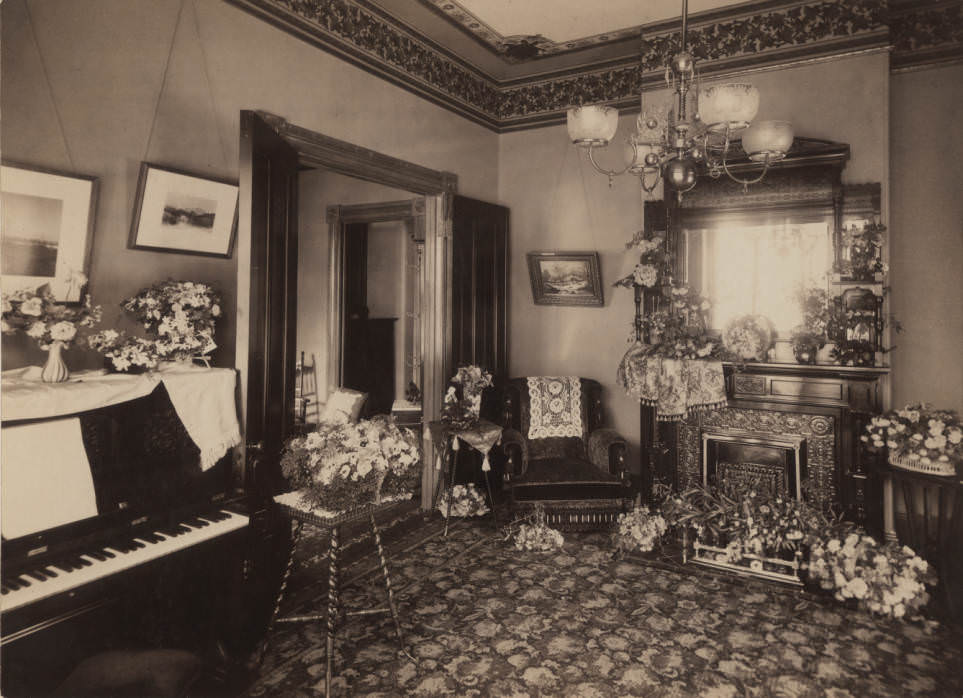
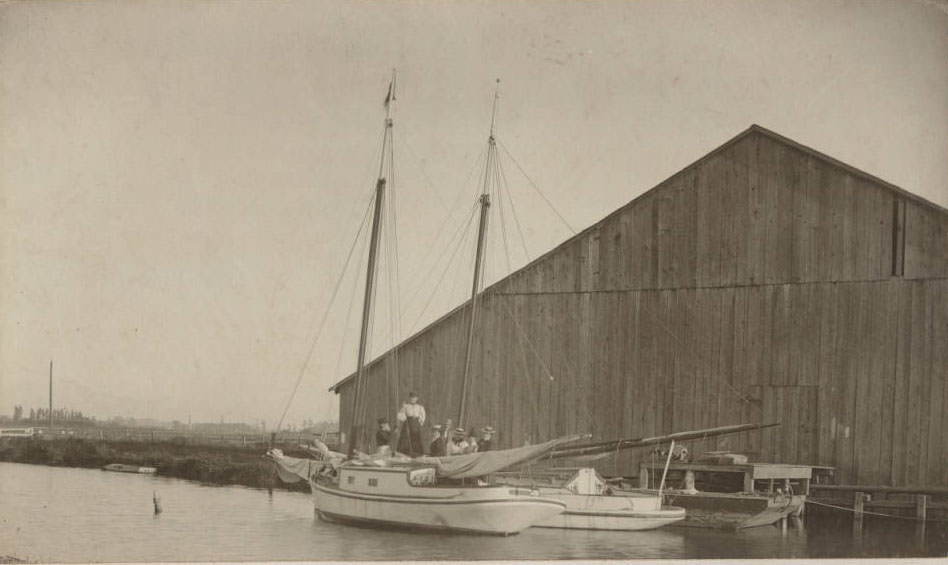
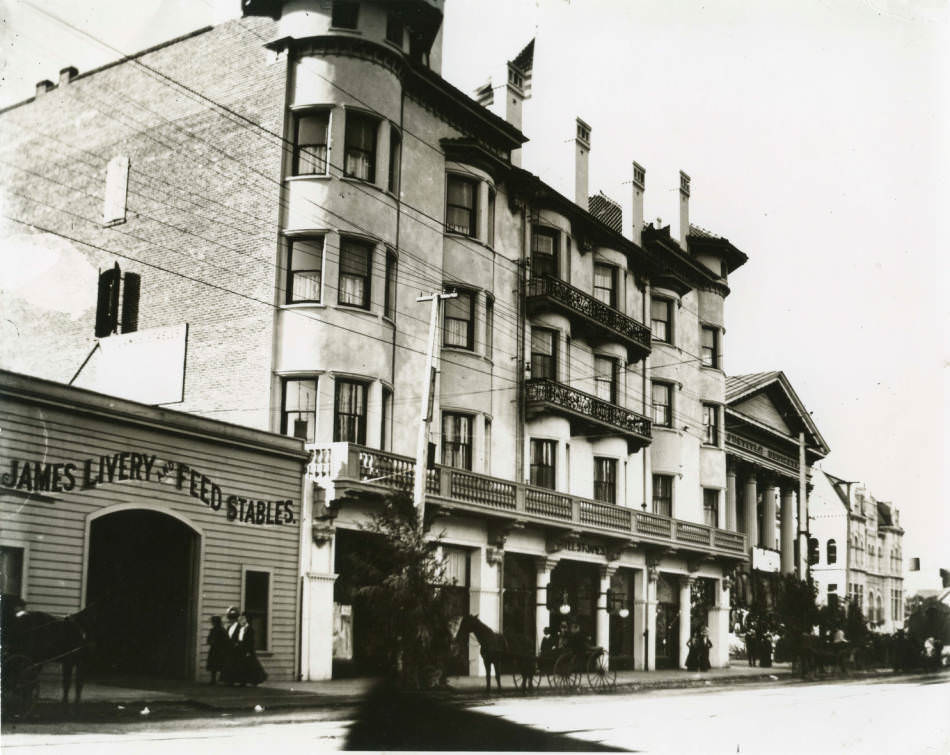
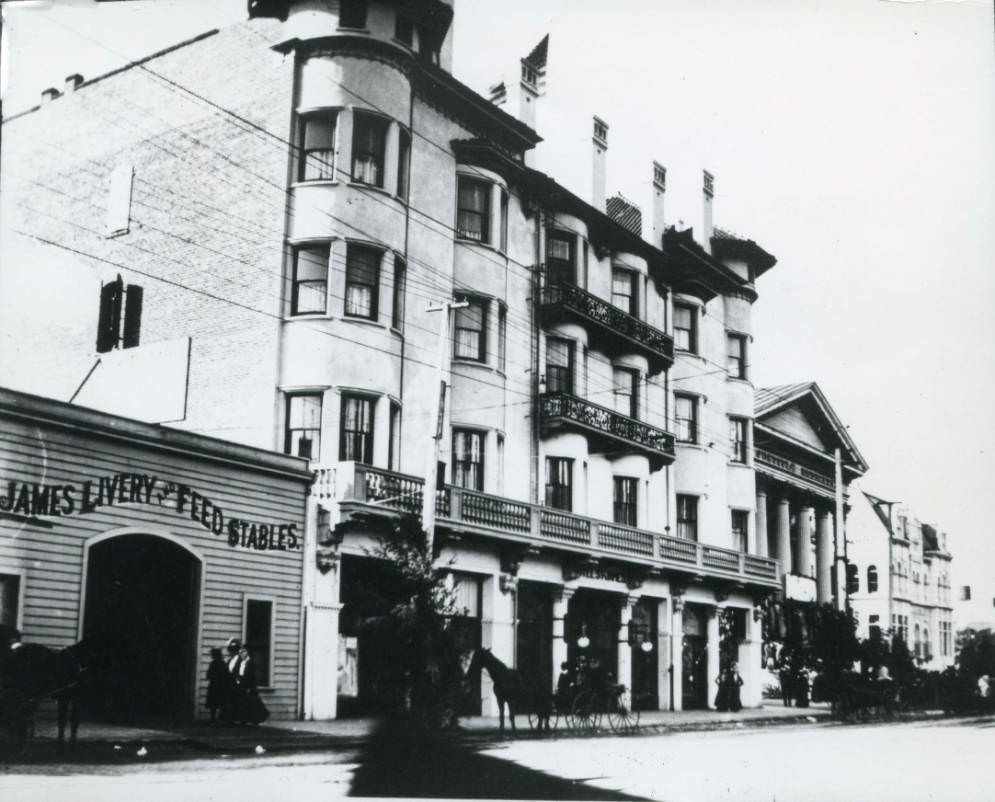
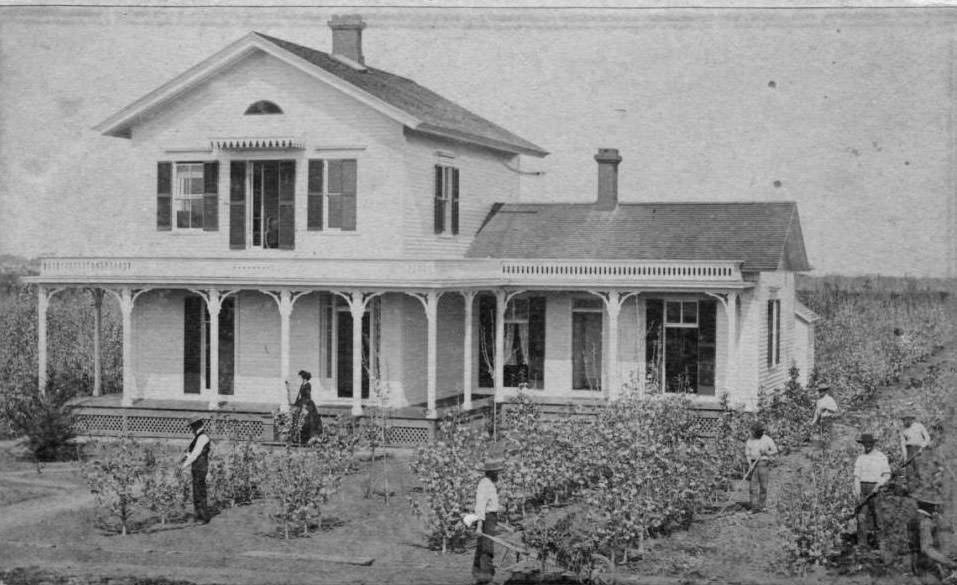

Last time something like this was posted I was irked that we could have building in down town with a sign ‘DRUGS’ on it.
Now I’m pissed we don’t have a windmill just taking up space on a street.
San Jose has lost its charm.